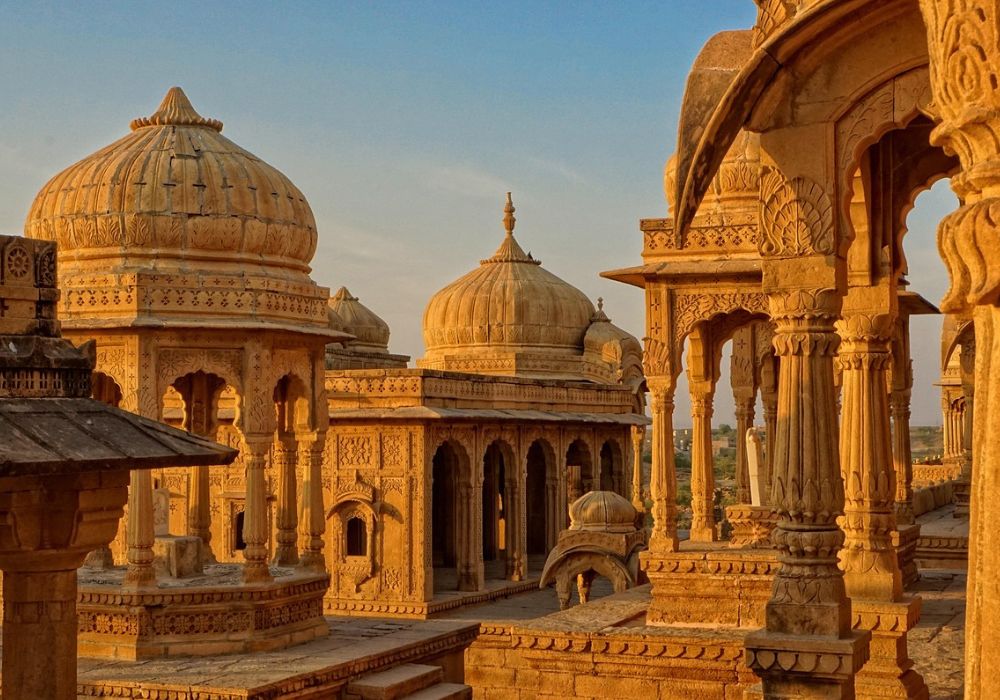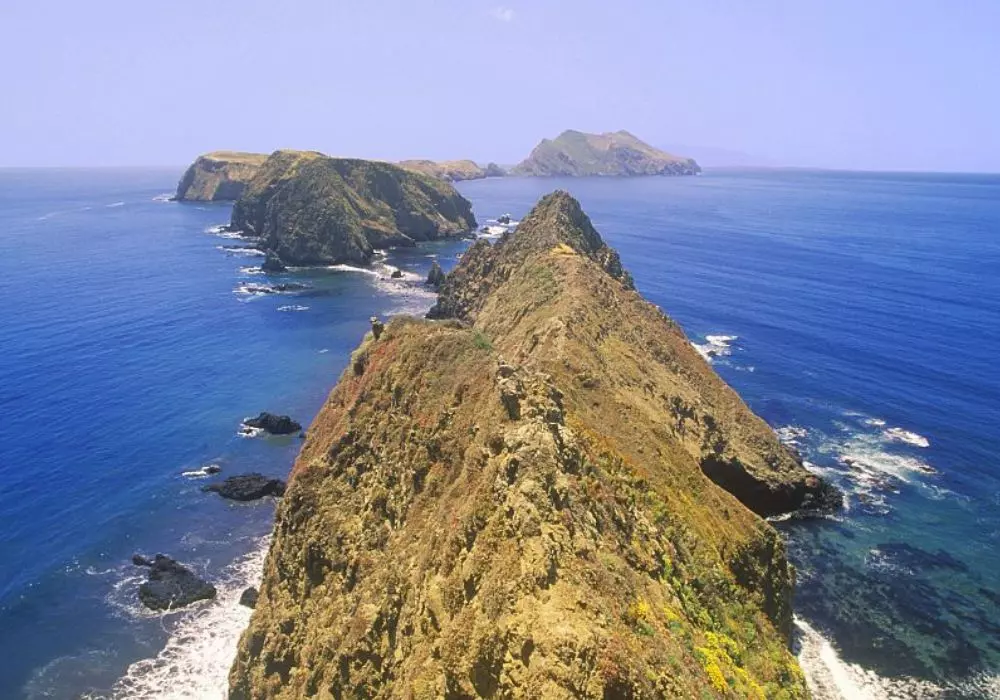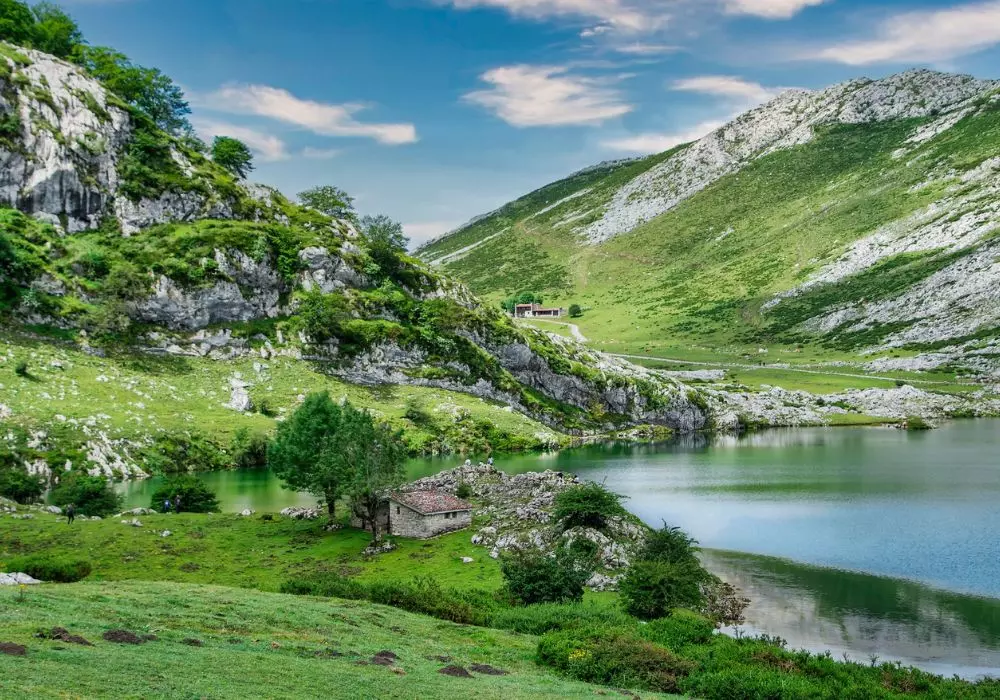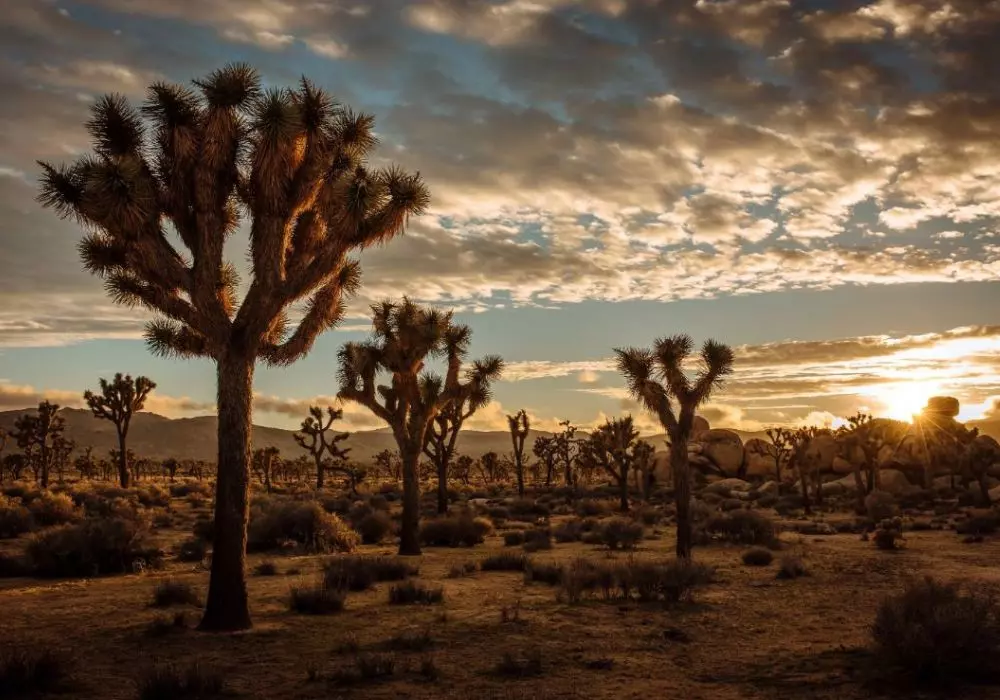India, a land of rich history and vibrant culture, is home to some of the most stunning palaces in India.
These architectural marvels, scattered across the country, are not just remnants of royal heritage but also symbols of the nation’s opulent past.
From the majestic Hawa Mahal in Jaipur to the grand Mysore Palace in Karnataka, each palace tells a unique story.
The palaces in India offer a glimpse into the lives of the erstwhile maharajas and their courts, showcasing intricate designs, lavish interiors, and exquisite craftsmanship.
Exploring these palaces in India is like stepping back in time, providing an immersive experience into the splendor and grandeur of India’s royal history.
Mysore Palace, Karnataka
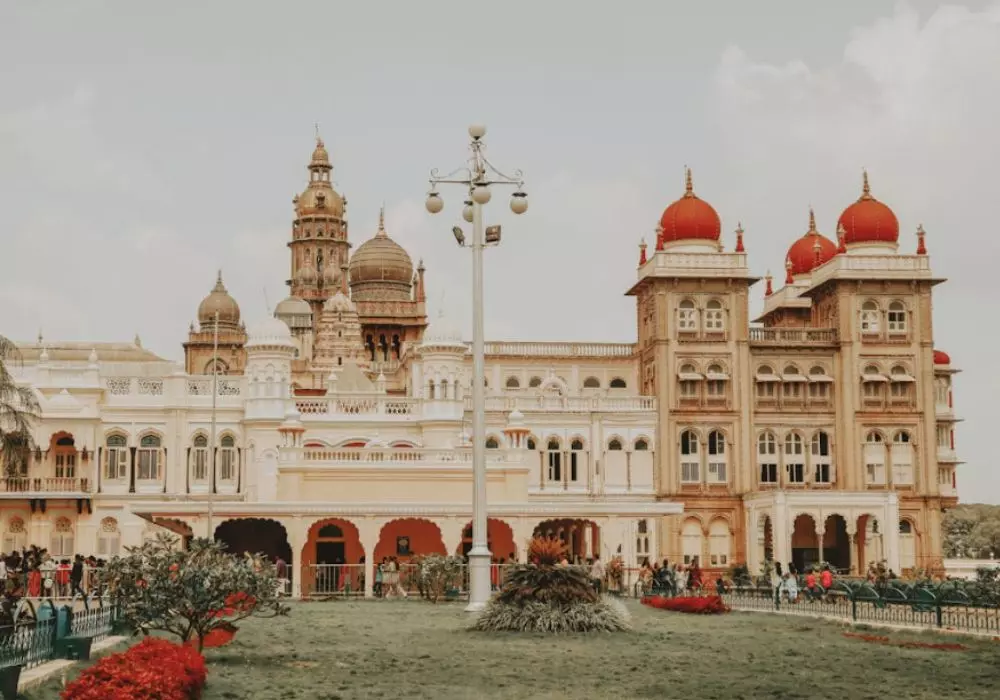

Mysore Palace, located in the heart of Mysore city in Karnataka, is a breathtaking example of Indo-Saracenic architecture.
Also known as the Amba Vilas Palace, it served as the official residence of the Wodeyar Maharajas of Mysore.
This grand palace features a captivating blend of Hindu, Muslim, Rajput, and Gothic architectural styles, adorned with intricately carved arches, domes, and vibrant frescoes.
The palace is particularly renowned for its opulent interiors, including the Durbar Hall, with its ornate ceiling and stained glass windows, and the Kalyana Mantapa, a marriage hall adorned with stunning artwork.
Today, Mysore Palace is one of India’s most visited tourist attractions, drawing millions of visitors each year to marvel at its majestic beauty and rich historical significance.
City Palace, Jaipur, Rajasthan
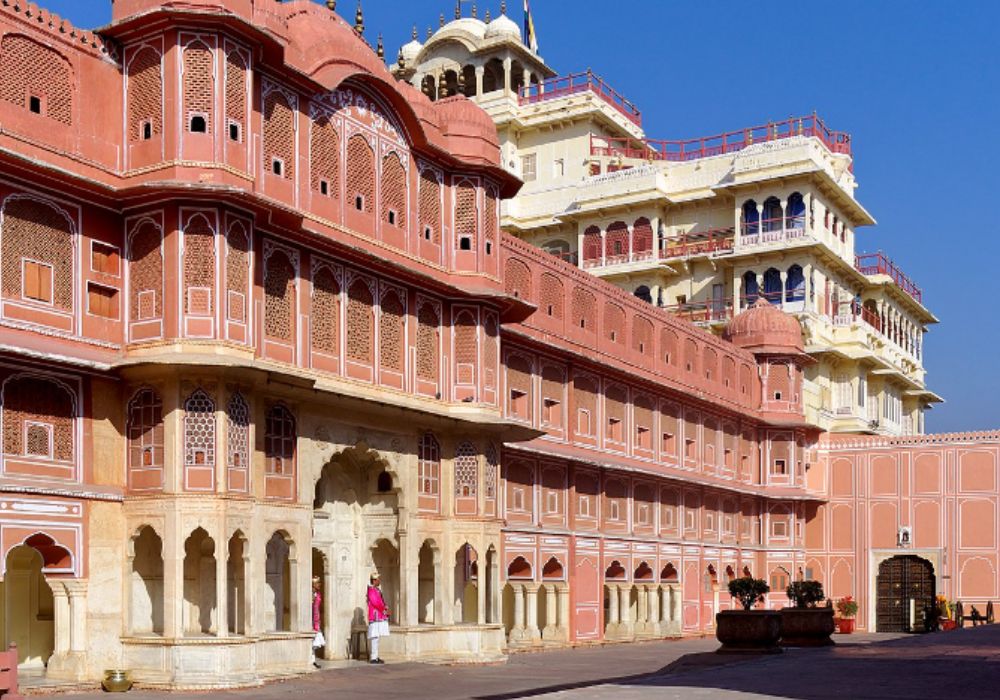

The City Palace in Jaipur, Rajasthan, stands as a magnificent symbol of the city’s royal heritage.
Constructed in the 18th century by Maharaja Sawai Jai Singh II, it showcases a splendid blend of Rajput, Mughal, and European architectural styles.
This sprawling complex encompasses courtyards, gardens, and palaces, including the Chandra Mahal and Mubarak Mahal.
The Chandra Mahal, still serving as the residence of the Jaipur royal family, offers guided tours to visitors, displaying exquisite artifacts, paintings, and royal belongings.
The Mubarak Mahal, originally built as a reception hall, now houses the Maharaja Sawai Man Singh II Museum, exhibiting an extensive collection of royal costumes, textiles, and weapons.
The City Palace’s grandeur, vibrant colors, and intricate designs make it a must-visit destination for those exploring the rich cultural heritage of Jaipur and Rajasthan.
Udaipur City Palace, Rajasthan
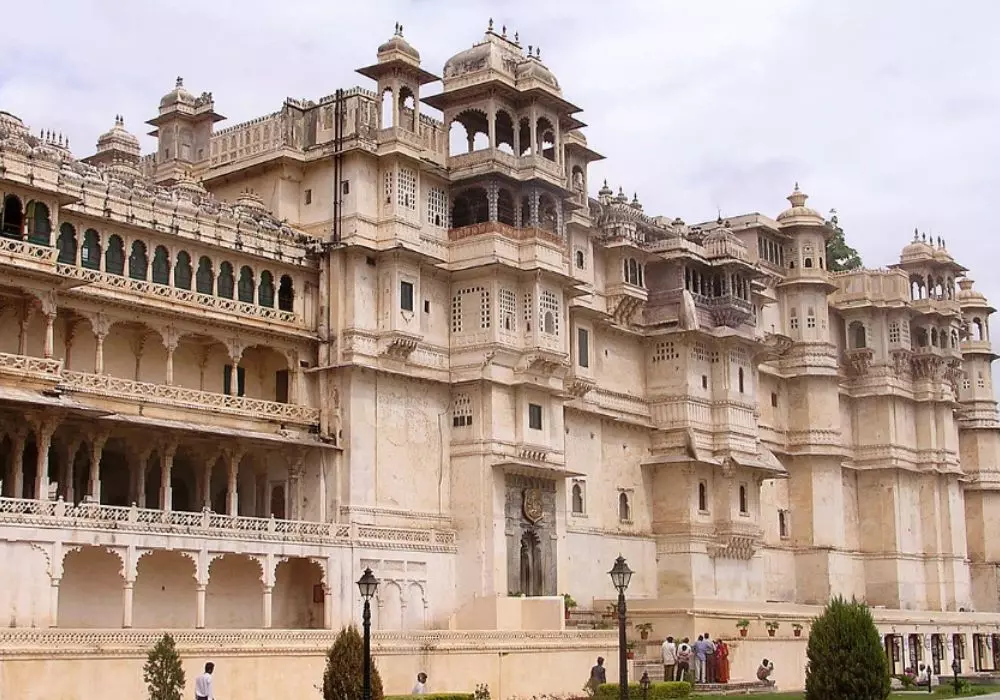

The Udaipur City Palace, located on the eastern banks of Lake Pichola in Rajasthan, is a magnificent architectural marvel that showcases the grandeur of Rajput and Mughal influences.
Built over centuries, starting in 1559 by Maharana Udai Singh II, this sprawling complex features ornate chambers, intricate courtyards, and breathtaking panoramic views of the surrounding city and lake.
Visitors can explore its opulent halls, adorned with exquisite frescoes, mirror work, and decorative tiles, and immerse themselves in the rich history and culture of the Mewar dynasty.
Today, the Udaipur City Palace stands as a symbol of Udaipur’s royal heritage and continues to enchant tourists from around the world with its timeless elegance and historical significance.
Jai Vilas Palace, Gwalior, Madhya Pradesh
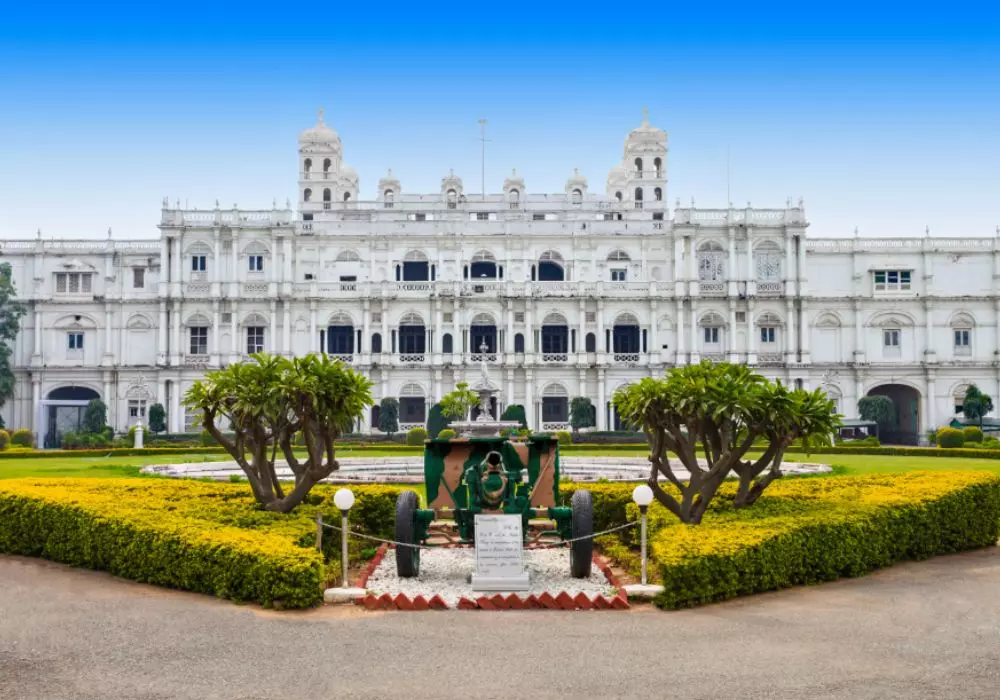

The Jai Vilas Palace, situated in Gwalior, Madhya Pradesh, is a magnificent architectural gem that epitomizes opulence and grandeur.
Built in the 19th century by Maharaja Jayajirao Scindia of Gwalior, this palace is renowned for its striking Indo-European architecture and vast expanse.
One of its most notable features is the Durbar Hall, adorned with an impressive gold-plated ceiling and adorned with intricate chandeliers, which is said to be one of the largest in the world.
The palace also houses the Scindia Museum, showcasing a vast collection of artifacts, including royal memorabilia, weaponry, and art pieces.
The Jai Vilas Palace stands as a testament to the rich cultural heritage and royal legacy of Gwalior, attracting visitors with its majestic beauty and historical significance.
Laxmi Vilas Palace, Vadodara, Gujarat
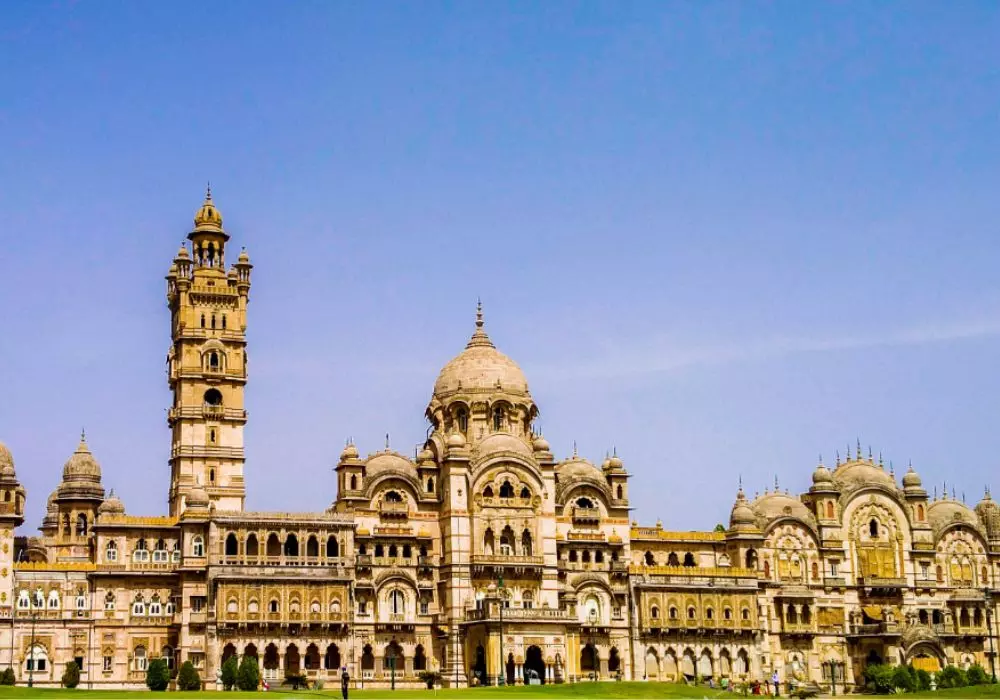

The Laxmi Vilas Palace in Vadodara, Gujarat, is an architectural marvel built in the late 19th century by Maharaja Sayajirao Gaekwad III.
This sprawling palace, four times the size of Buckingham Palace, showcases an exquisite blend of Indo-Saracenic, Hindu, Mughal, and European styles.
Its opulent interiors, including the magnificent Durbar Hall adorned with intricate mosaic work and stained glass windows, reflect the grandeur of the Gaekwad dynasty.
Surrounded by lush gardens, the palace also houses a museum displaying a rich collection of paintings, sculptures, and royal artifacts, offering visitors a glimpse into India’s royal heritage.
Falaknuma Palace, Hyderabad, Telangana
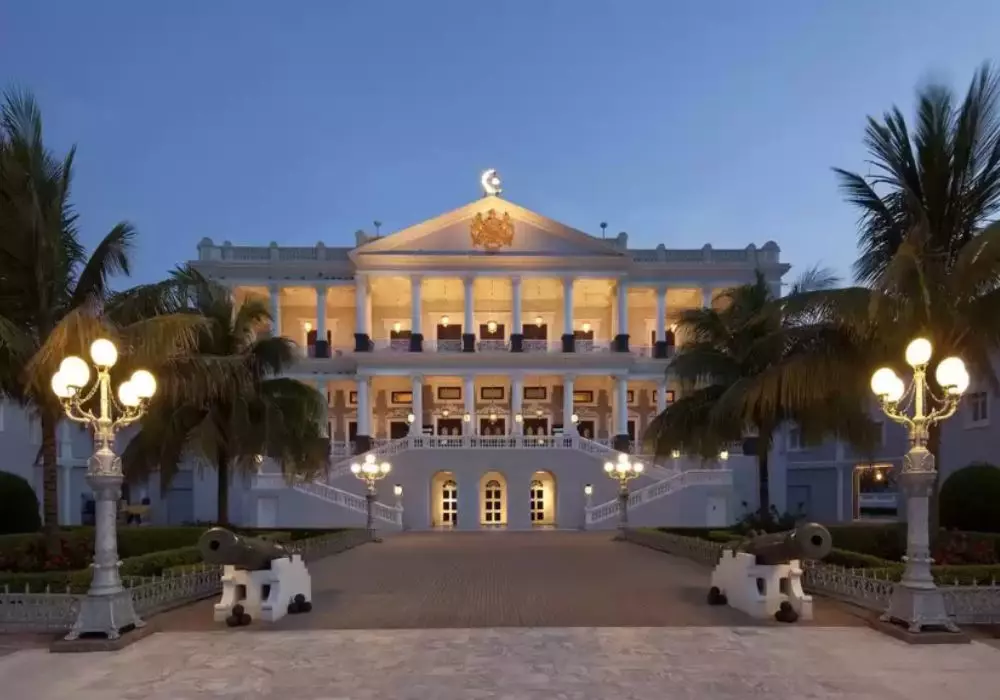

The Falaknuma Palace, located in Hyderabad, Telangana, is a magnificent heritage hotel known for its grandeur and luxury.
Built in the late 19th century by Nawab Vikar-ul-Umra, the palace was later acquired by the Nizam of Hyderabad, who transformed it into a royal guesthouse.
Perched atop a hill overlooking the city, the palace boasts stunning architecture, including Italian marble staircases, intricate woodcarvings, and Venetian chandeliers.
Its opulent interiors feature a lavish dining hall with a 101-seat table, said to be the world’s longest dining table.
Today, the Falaknuma Palace offers an unforgettable experience to guests, combining regal hospitality with modern amenities amidst the splendor of a bygone era.
Umaid Bhawan Palace, Jodhpur, Rajasthan
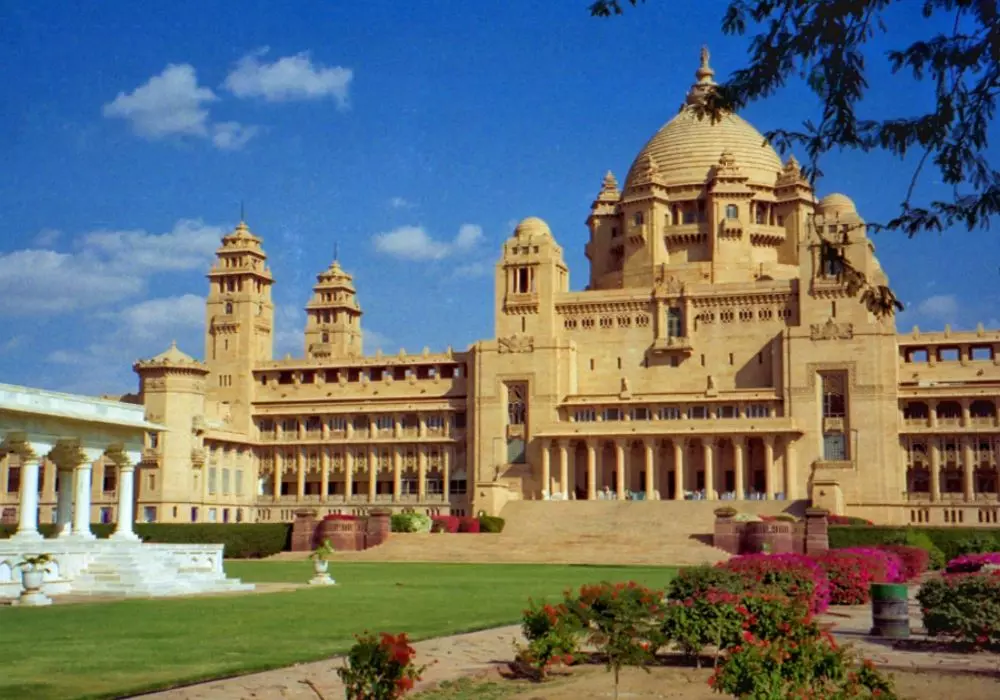

The Umaid Bhawan Palace in Jodhpur, Rajasthan, is a magnificent architectural wonder that epitomizes royal grandeur and luxury.
Built between 1928 and 1943, it is named after Maharaja Umaid Singh and serves as both a royal residence and a luxury hotel.
This opulent palace features a majestic blend of Eastern and Western architectural styles, with grand domes, intricate balconies, and lavish interiors adorned with Art Deco influences.
Set amidst lush gardens, the palace offers breathtaking views of the cityscape.
It also houses a museum showcasing artifacts and memorabilia from the royal era, providing visitors with a fascinating glimpse into Rajasthan’s regal heritage.
Mehrangarh Fort, Jodhpur, Rajasthan
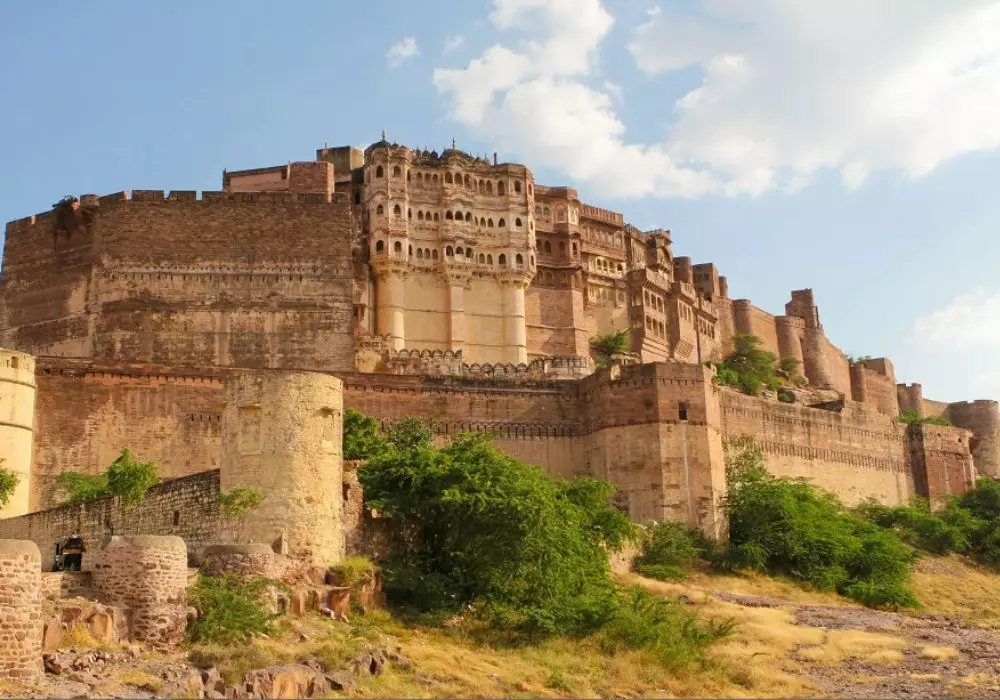

The Mehrangarh Fort, situated in Jodhpur, Rajasthan, is one of India’s most formidable and magnificent forts.
Built atop a steep hill by Rao Jodha in the 15th century, it offers panoramic views of the Blue City below.
The fort’s massive walls house several palaces known for their intricate carvings, expansive courtyards, and ornate balconies.
The fort’s museum showcases an extensive collection of royal artifacts, including weapons, paintings, and palanquins, providing visitors with insight into the region’s rich history and culture.
Today, Mehrangarh Fort stands as a proud symbol of Jodhpur’s glorious past and continues to captivate visitors with its architectural splendor and historical significance.
Amber Palace, Jaipur, Rajasthan
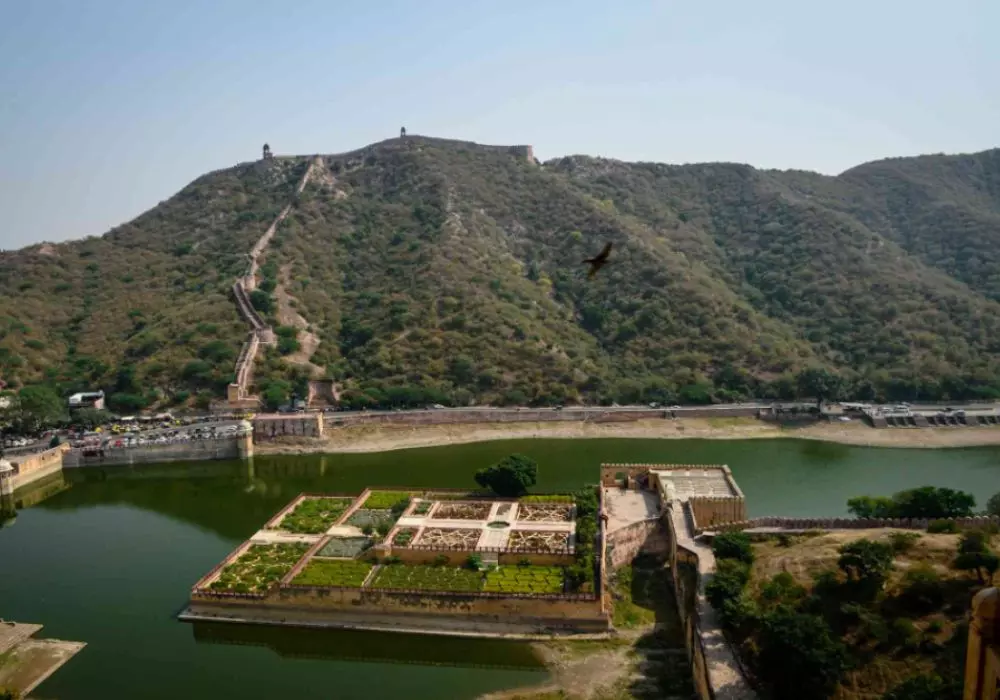

The Amber Palace, located in Jaipur, Rajasthan, is a stunning architectural marvel that dates back to the 16th century.
Constructed by Raja Man Singh I, this majestic fortress-palace boasts a captivating blend of Rajput and Mughal architectural styles.
Perched atop a hill overlooking Maota Lake, it offers breathtaking views of the surrounding landscape.
Visitors can explore its ornate halls, intricate carvings, and picturesque gardens, including the renowned Sheesh Mahal (Hall of Mirrors), adorned with thousands of reflective glass pieces.
The Amber Palace remains a cherished symbol of Jaipur’s rich cultural heritage and continues to attract tourists from around the world with its timeless charm and historical significance.
Hawa Mahal, Jaipur, Rajasthan
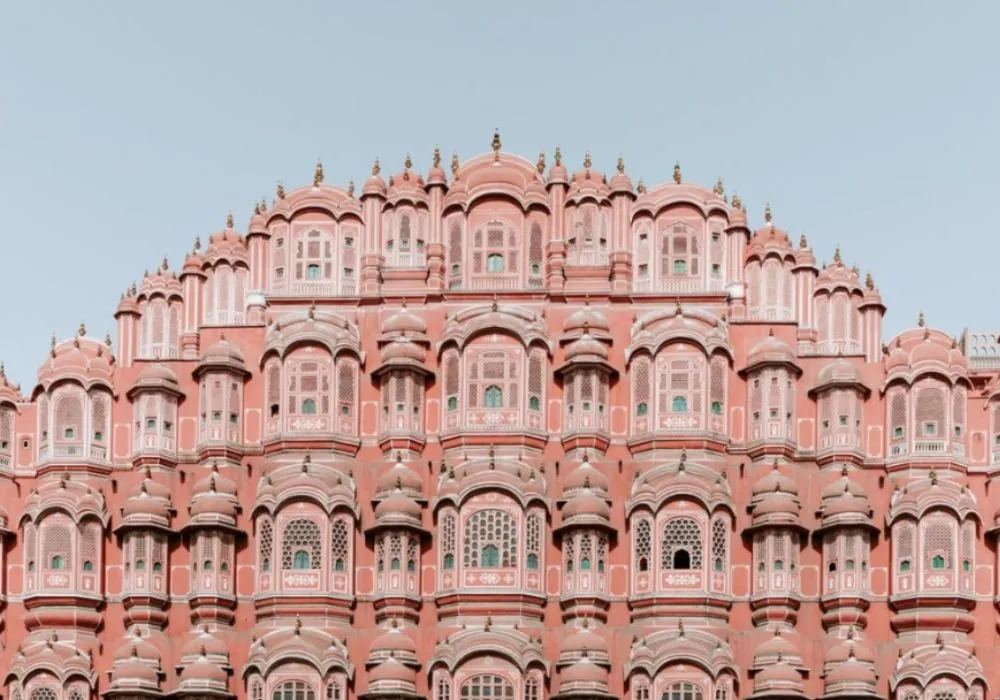

Hawa Mahal, located in Jaipur, Rajasthan, is a stunning architectural masterpiece built in 1799 by Maharaja Sawai Pratap Singh.
This iconic five-story palace is renowned for its unique facade, which features 953 intricately designed jharokhas (small windows) that allow the cool breeze to circulate, giving it the name “Palace of Winds” or “Hawa Mahal.”
The palace was designed in the form of the crown of Lord Krishna to honor him.
While its exterior is impressive, the interior consists of narrow passages and chambers.
Hawa Mahal’s distinctive honeycomb structure, pink sandstone facade, and intricate lattice work make it one of Jaipur’s most famous landmarks, attracting visitors from around the world to marvel at its beauty and historical significance.
Chittorgarh Fort, Rajasthan
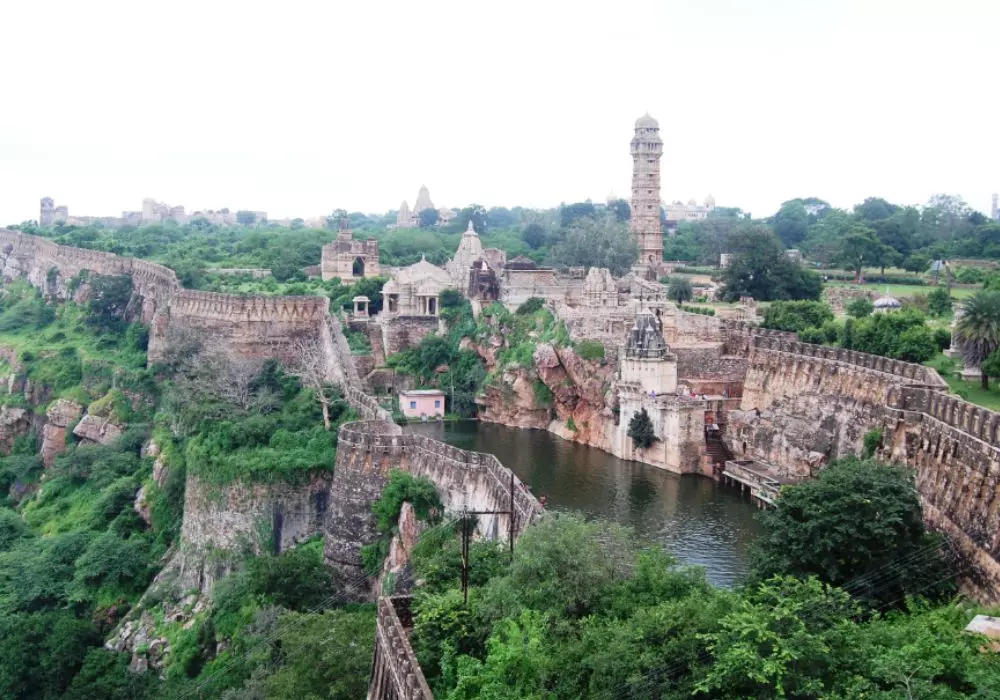

Chittorgarh Fort, located in Rajasthan, is one of the largest and most historically significant forts in India.
Built atop a hill in the 7th century AD, it spans over 700 acres and is a UNESCO World Heritage Site.
The fort is renowned for its rich history, having been the site of several battles and sieges throughout the centuries.
It houses numerous palaces, temples, and monuments, including the Vijay Stambh (Tower of Victory) and the Kirti Stambh (Tower of Fame), which are iconic symbols of Rajput valor and pride.
Chittorgarh Fort stands as a testament to the resilience and spirit of the Rajputana dynasty and continues to be a revered symbol of Rajasthan’s cultural heritage.
Junagarh Fort, Bikaner, Rajasthan
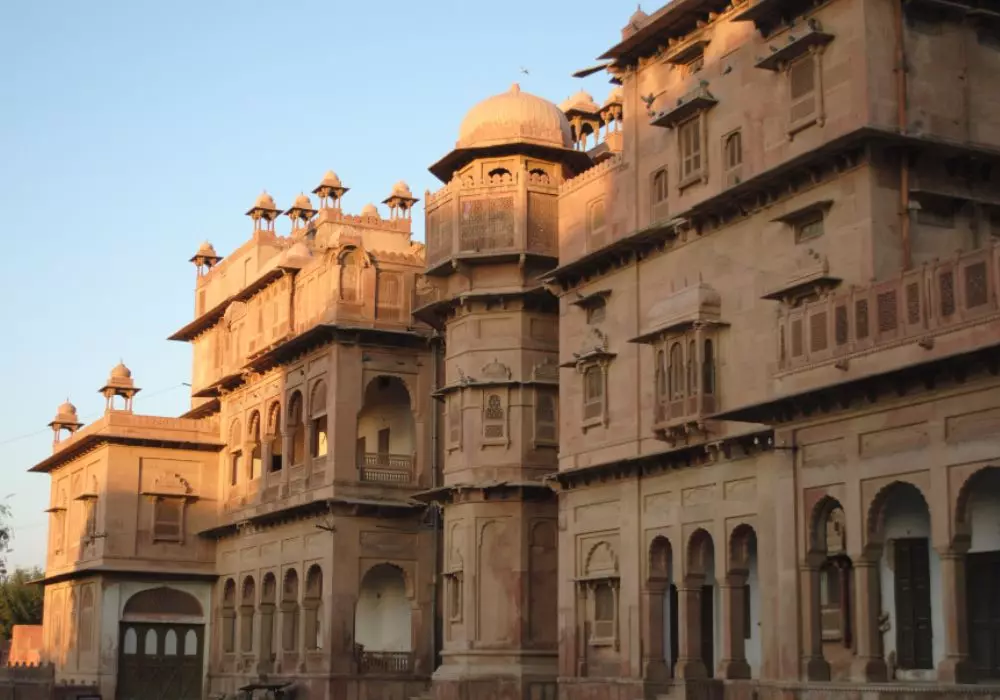

Junagarh Fort, situated in Bikaner, Rajasthan, is an impressive architectural marvel constructed in the 16th century by Raja Rai Singh.
Unlike many other forts in Rajasthan, Junagarh was never conquered, and thus, its original structures remain intact.
The fort is renowned for its imposing walls, bastions, and ornate palaces built within.
Inside, visitors can explore a fascinating array of courtyards, halls, and chambers adorned with intricate carvings, frescoes, and mirror work.
The fort also houses several temples, including the Karni Mata Temple, dedicated to the revered deity Karni Mata.
Junagarh Fort stands as a testament to Bikaner’s rich history and architectural prowess, drawing visitors from around the world to admire its grandeur and historical significance.
Lalgarh Palace, Bikaner, Rajasthan
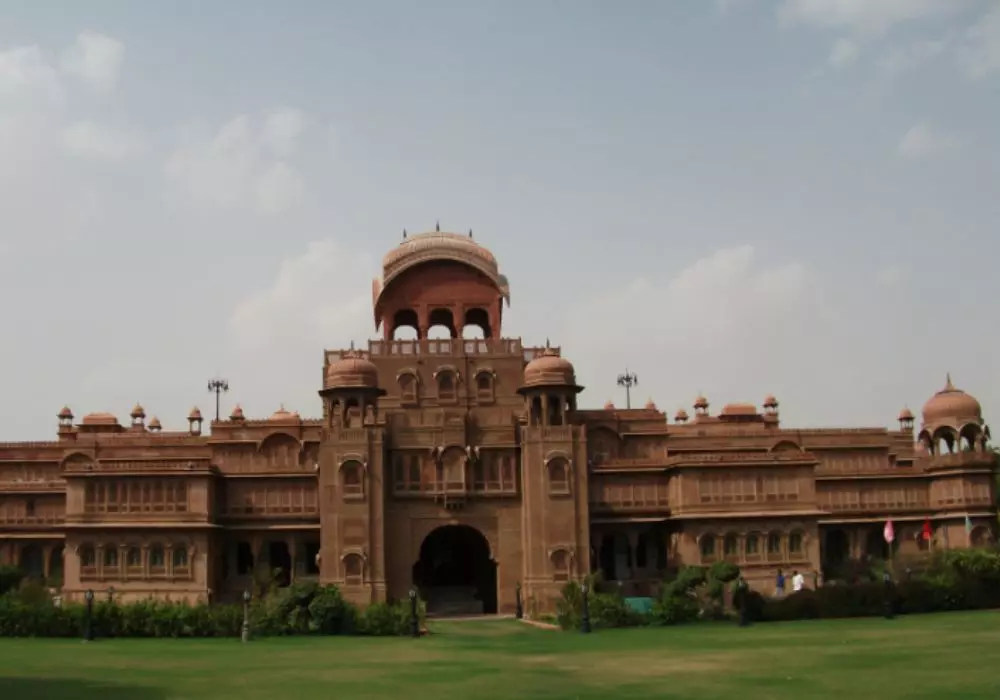

Lalgarh Palace, located in Bikaner, Rajasthan, is a magnificent architectural masterpiece commissioned by Maharaja Ganga Singh in the early 20th century.
Designed by Sir Swinton Jacob, the palace is an exquisite blend of Rajput, Mughal, and European architectural styles.
The palace is renowned for its stunning red sandstone facade, intricately carved balconies, and elegant marble interiors.
Lalgarh Palace also features lush gardens, grand courtyards, and ornate halls adorned with exquisite artwork and royal memorabilia.
Today, part of the palace has been converted into a luxury heritage hotel, offering guests an opportunity to experience the opulence and grandeur of Rajasthan’s royal heritage.
Jaisalmer Fort, Rajasthan
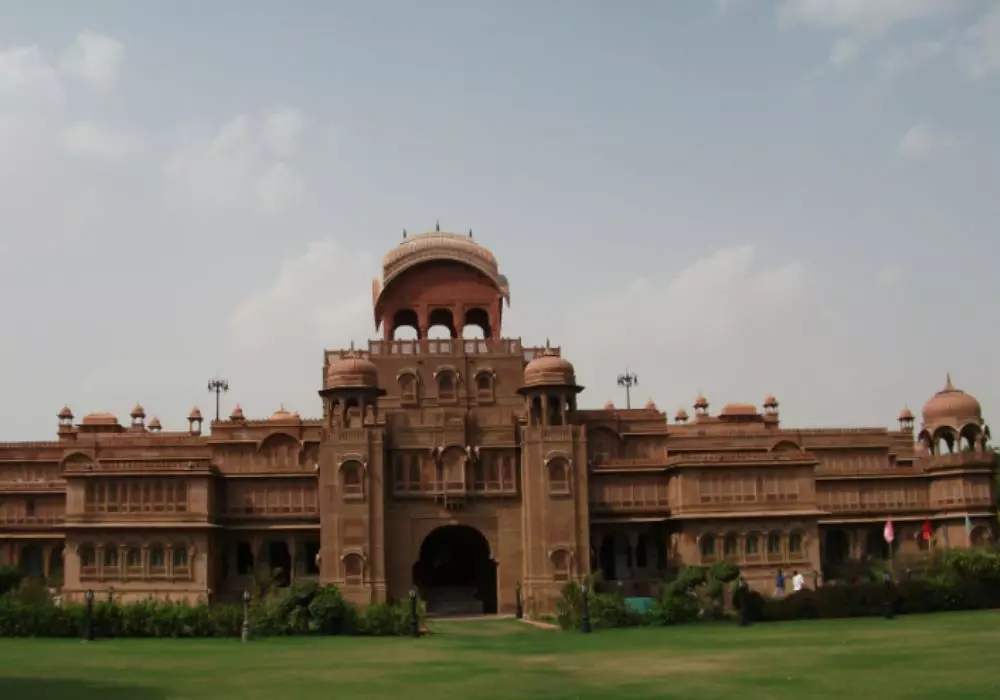

Jaisalmer Fort, located in the heart of the Thar Desert in Rajasthan, is one of the largest fully preserved fortified cities in the world.
Built in 1156 AD by Rajput ruler Rawal Jaisal, the fort rises majestically from the golden sands of the desert, giving it the nickname “Sonar Quila” or “Golden Fort.”
Its massive sandstone walls contain several ornate palaces, temples, havelis (traditional mansions), and bustling narrow streets lined with shops and residences.
The fort’s intricate architecture, stunning views of the desert landscape, and rich history, including tales of valor and romance, make it a UNESCO World Heritage Site and a popular tourist destination, attracting visitors from around the globe to experience its timeless charm and cultural heritage.
Rambagh Palace, Jaipur, Rajasthan
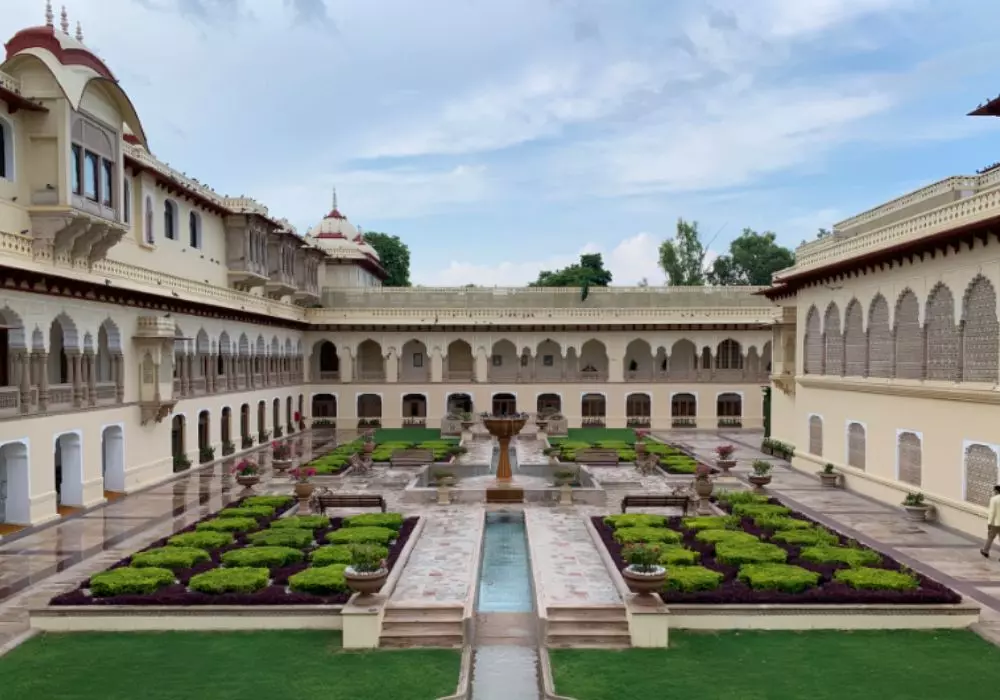

Rambagh Palace, located in Jaipur, Rajasthan, is a magnificent royal residence that dates back to the 19th century.
Originally built as a garden house for the queen’s handmaiden, it was later transformed into a grand palace by Maharaja Sawai Man Singh II of Jaipur.
The palace exudes opulence with its stunning architecture, lush gardens, and luxurious interiors adorned with intricate carvings, chandeliers, and royal artifacts.
Rambagh Palace served as the residence of the Jaipur royal family until it was converted into a luxury hotel in the 1950s.
Today, it stands as one of the most prestigious heritage hotels in the world, offering guests a chance to experience the splendor and grandeur of Rajasthan’s royal past.
Neemrana Fort Palace, Rajasthan
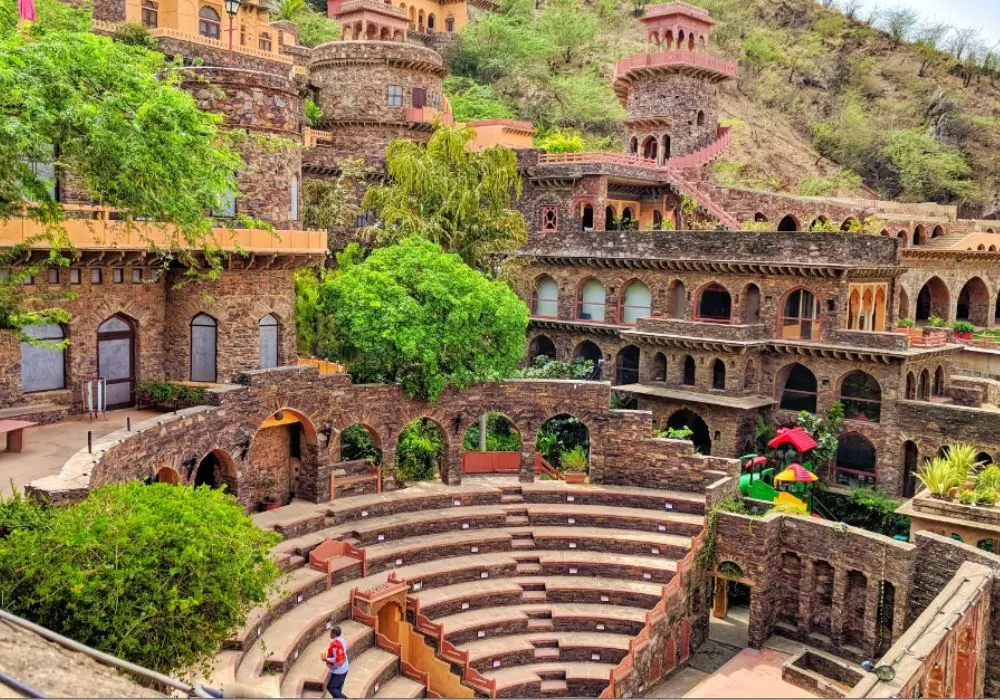

Neemrana Fort Palace, nestled in the Aravalli hills of Rajasthan, is a captivating heritage hotel that dates back to the 15th century.
Built by Rajput Maharaja Prithvi Raj Chauhan III, it was later transformed into a luxurious palace by the Neemrana family.
This majestic fort palace boasts stunning architecture, with its towering ramparts, ornate balconies, and intricately carved stone walls.
The palace offers a unique blend of history and modernity, with its restored rooms and suites providing guests with a glimpse into Rajasthan’s rich cultural heritage.
Set amidst picturesque surroundings, Neemrana Fort Palace offers a serene retreat for travelers seeking an unforgettable experience amidst the charm of a bygone era.
Amer Fort, Jaipur, Rajasthan
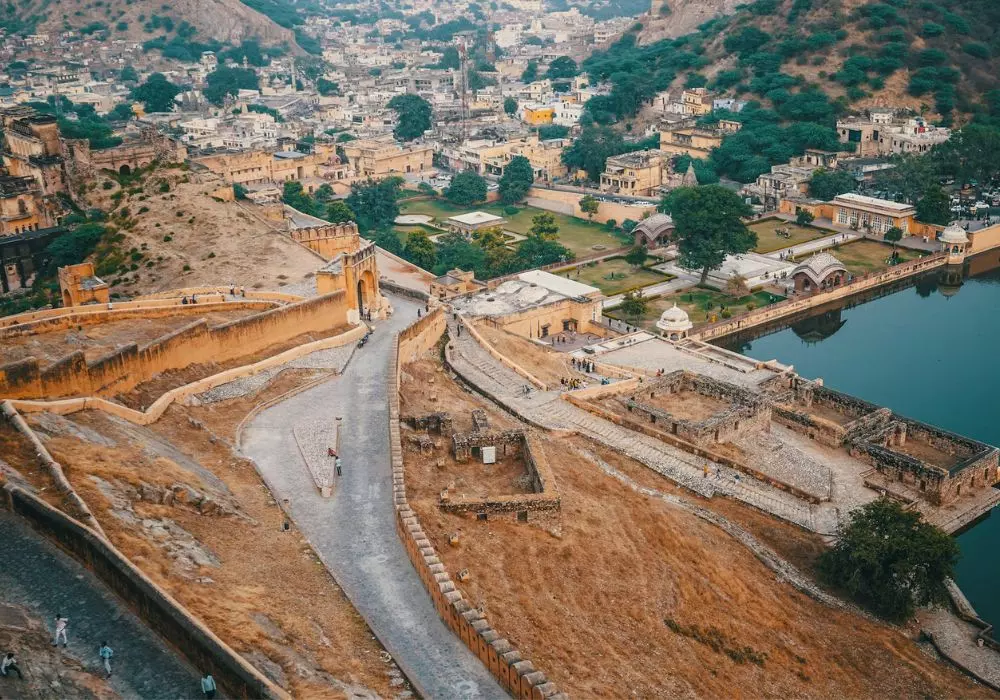

Amer Fort, located in Jaipur, Rajasthan, is a UNESCO World Heritage Site and one of the most iconic landmarks of the region.
Built in the 16th century by Raja Man Singh I, the fort is a magnificent example of Rajput architecture, blending Hindu and Mughal influences.
Perched atop a hill overlooking Maota Lake, Amer Fort boasts a stunning blend of red sandstone and marble, with intricate carvings, mirror work, and frescoes adorning its walls and ceilings.
The fort’s highlights include the Diwan-i-Aam (Hall of Public Audience), the Sheesh Mahal (Hall of Mirrors), and the Sukh Niwas (Hall of Pleasure), each showcasing the opulence and grandeur of the Rajput era.
Visitors can also enjoy an elephant ride up to the fort, adding to the enchanting experience of exploring this historical marvel.
Amer Fort stands as a testament to Jaipur’s rich cultural heritage and continues to mesmerize visitors with its timeless beauty and historical significance.
Raj Palace, Jaipur, Rajasthan
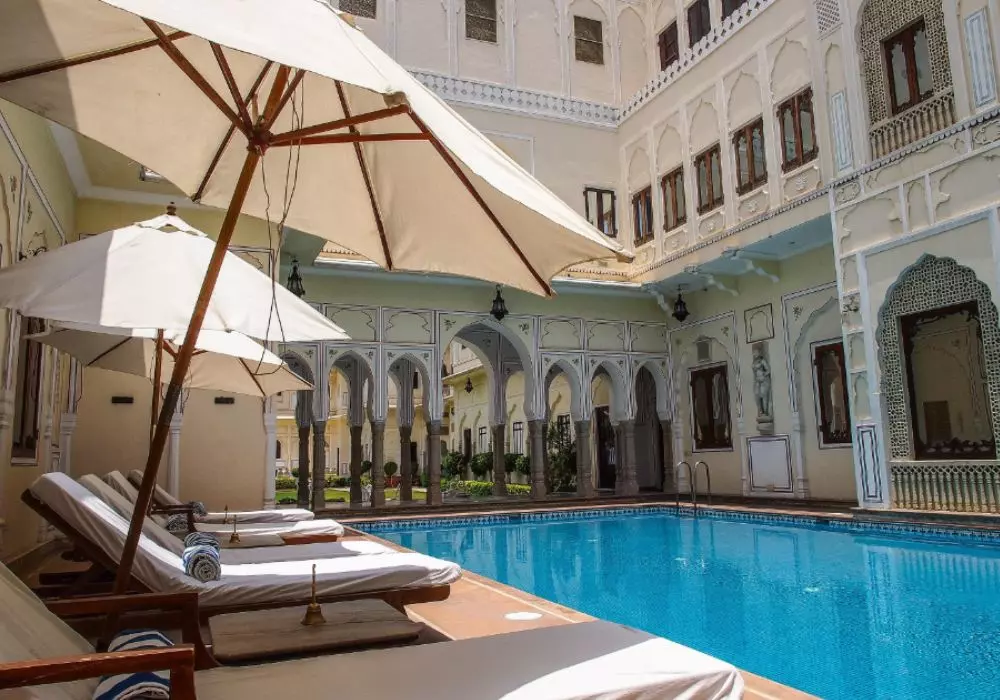

The Raj Palace, situated in Jaipur, Rajasthan, is a splendid heritage hotel that epitomizes luxury and grandeur.
Originally built in the 18th century, it was once the residence of the Maharaja of Jaipur’s prime minister.
The palace has been meticulously restored and converted into a lavish hotel, offering guests a glimpse into Rajasthan’s regal past.
The Raj Palace boasts opulent interiors adorned with exquisite artwork, antique furniture, and intricate detailing, creating an ambiance of refined elegance.
The hotel’s luxurious amenities, including royal suites, fine dining restaurants, and rejuvenating spa facilities, ensure a memorable and indulgent stay for discerning travelers.
With its rich history, unparalleled hospitality, and majestic surroundings, the Raj Palace promises an unforgettable experience in the heart of Jaipur.
Bangalore Palace, Karnataka
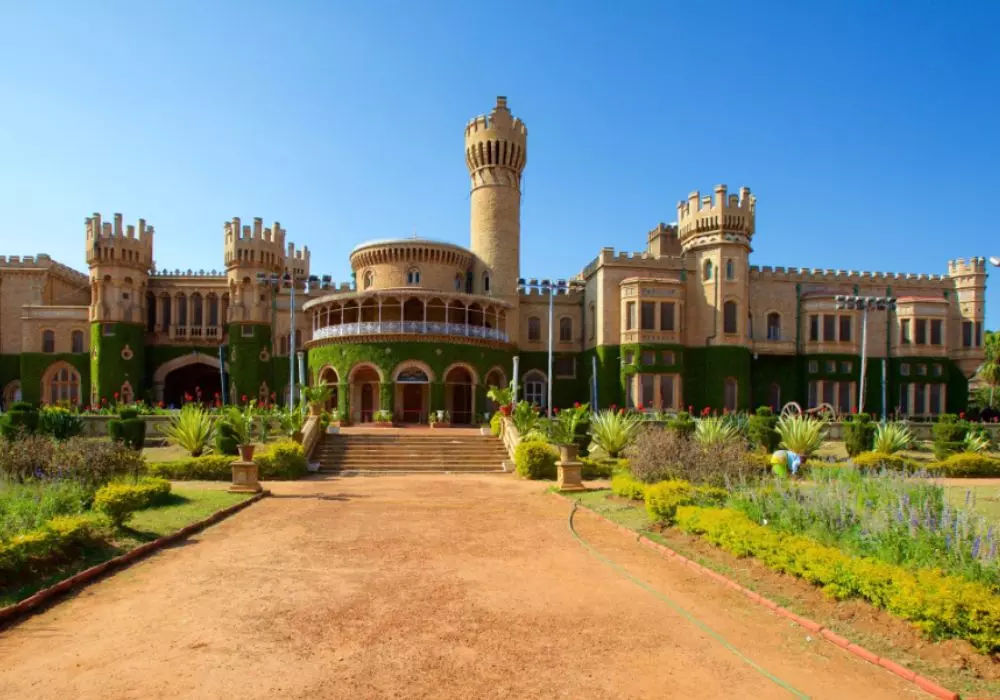

Bangalore Palace, situated in Bengaluru, Karnataka, is a magnificent architectural gem that reflects the grandeur of the Wodeyar dynasty.
Built in the Tudor-style architecture in 1887, it bears resemblance to the medieval castles of England.
Adorned with impressive towers, fortified walls, and intricate woodwork, the palace stands as a testament to royal opulence.
Inside, visitors can explore lavish interiors featuring exquisite furnishings, elegant chandeliers, and captivating artwork.
Surrounded by sprawling gardens, Bangalore Palace serves as a popular tourist attraction and venue for cultural events, offering a fascinating glimpse into Karnataka’s regal past.
Chowmahalla Palace, Hyderabad, Telangana
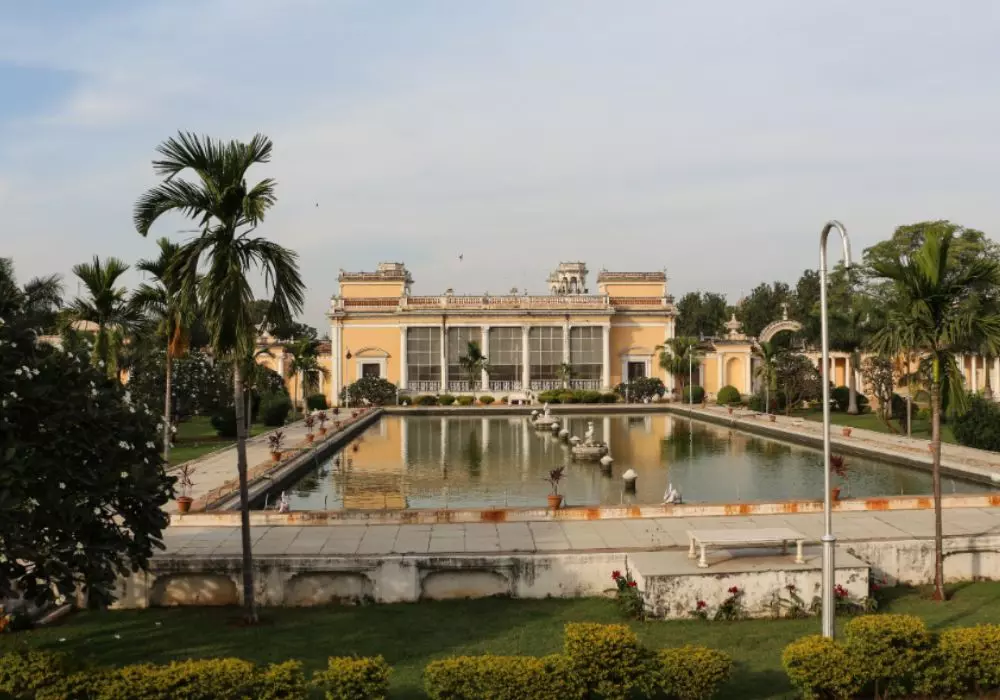

Chowmahalla Palace, located in Hyderabad, Telangana, is a splendid architectural marvel that served as the seat of the Nizams of Hyderabad.
Built in the 18th century, the palace complex comprises grand buildings, courtyards, and gardens, showcasing a captivating blend of Indo-Saracenic, Persian, and European architectural styles.
Its opulent halls feature exquisite stucco work, ornate chandeliers, and marble fountains, reflecting the grandeur of the Nizam era.
Visitors can explore the Khilwat Mubarak (Grand Durbar Hall) and the Shishe-Alat (Mirror Hall), which once hosted royal ceremonies and audiences.
Chowmahalla Palace also houses a remarkable collection of artifacts, providing insight into the rich history and cultural heritage of Hyderabad.
Today, it serves as a museum and cultural center, attracting tourists from around the world to experience its timeless charm and historical significance.
Tipu Sultan’s Summer Palace, Bengaluru, Karnataka
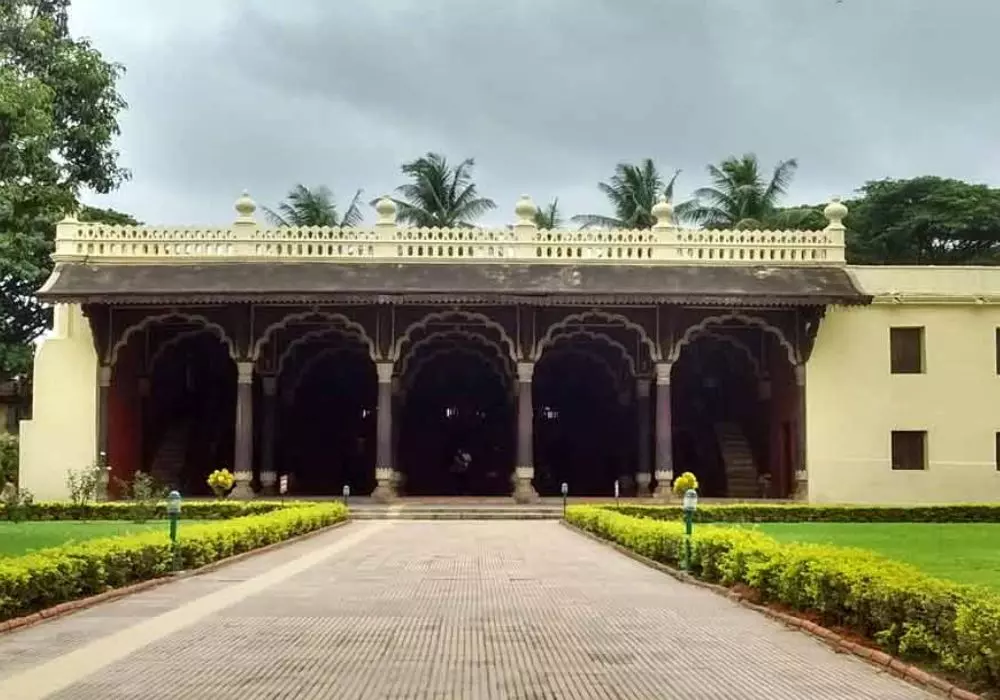

Tipu Sultan’s Summer Palace, located in Bengaluru, Karnataka, is a magnificent example of Indo-Islamic architecture.
Built in 1791, this elegant wooden palace served as the summer retreat of Tipu Sultan, the ruler of the Kingdom of Mysore.
The palace features intricately carved arches, pillars, and balconies, adorned with beautiful floral motifs and Islamic inscriptions.
The two-story palace is surrounded by lush gardens and reflects the Sultan’s fascination with art and culture.
Its interior comprises ornate chambers, including the Durbar Hall, where Tipu Sultan held court and conducted official meetings.
Chandra Mahal, Jaipur, Rajasthan
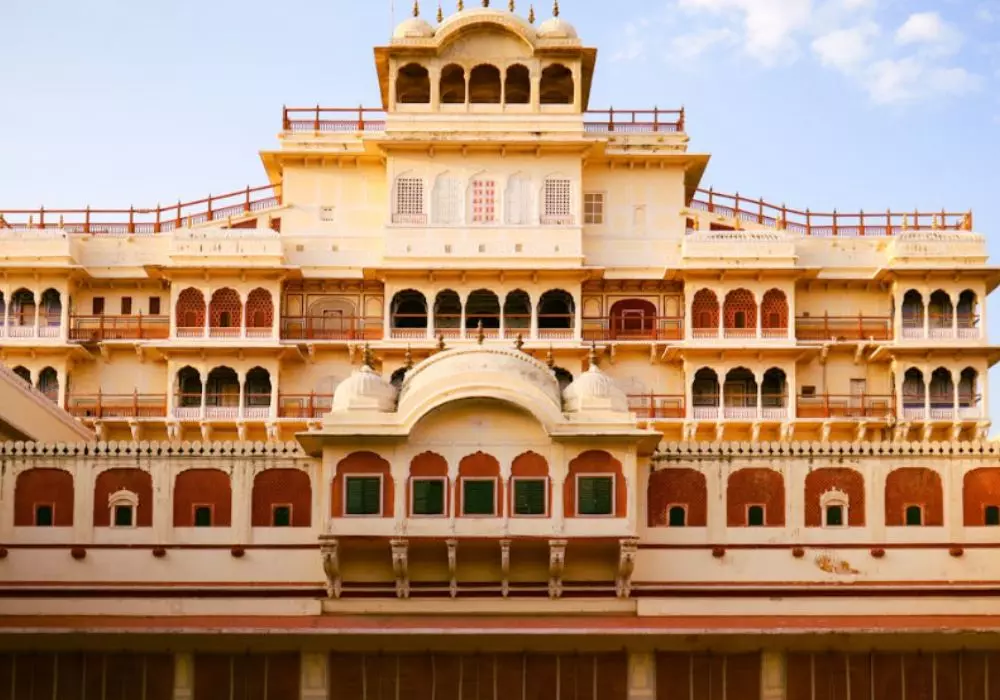

Chandra Mahal, located within the City Palace complex in Jaipur, Rajasthan, is a splendid seven-story palace that served as the residence of the royal family.
Built in the 18th century by Maharaja Sawai Jai Singh II, it showcases a magnificent blend of Rajput, Mughal, and European architectural styles.
Adorned with intricately carved arches, vibrant frescoes, and luxurious furnishings, the palace exudes regal elegance.
While parts of Chandra Mahal remain private, visitors can explore its grandeur through guided tours of selected chambers and museum galleries, offering a fascinating glimpse into Jaipur’s royal heritage.
Sajjangarh Palace, Udaipur, Rajasthan
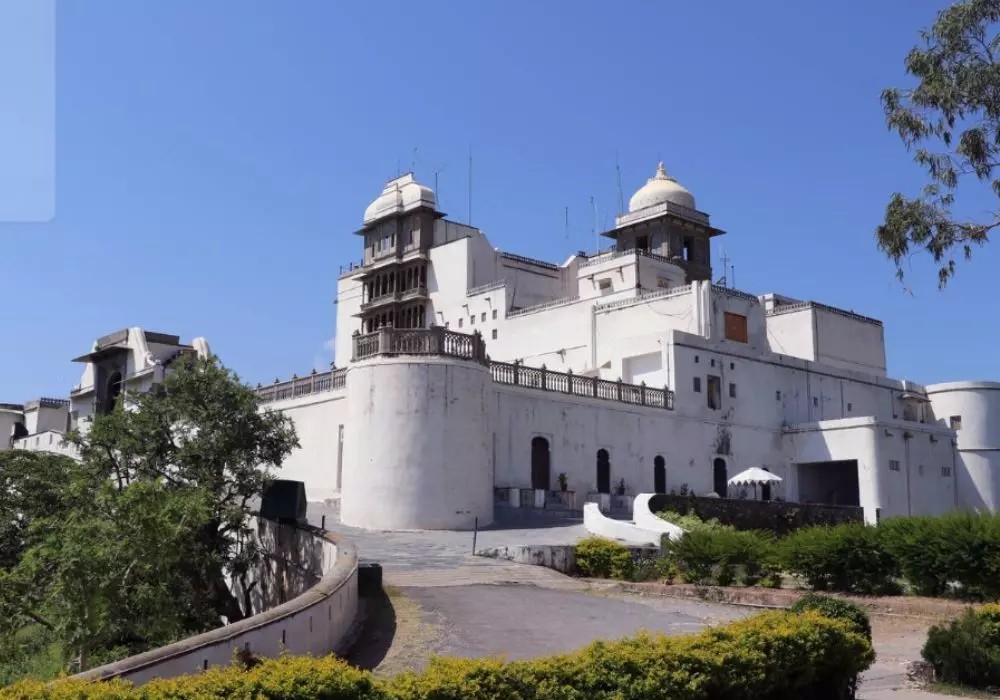

Sajjangarh Palace, also known as Monsoon Palace, is situated atop the Aravalli Hills overlooking the city of Udaipur, Rajasthan.
Built in the late 19th century by Maharana Sajjan Singh, it was intended to serve as an astronomical center and monsoon retreat for the royal family.
The palace offers panoramic views of Udaipur and its surrounding lakes, making it a popular tourist destination.
Although never completed as originally planned, the palace stands as a testament to the architectural prowess of the Mewar dynasty and continues to attract visitors with its scenic beauty and historical significance.
Deogarh Mahal, Rajasthan
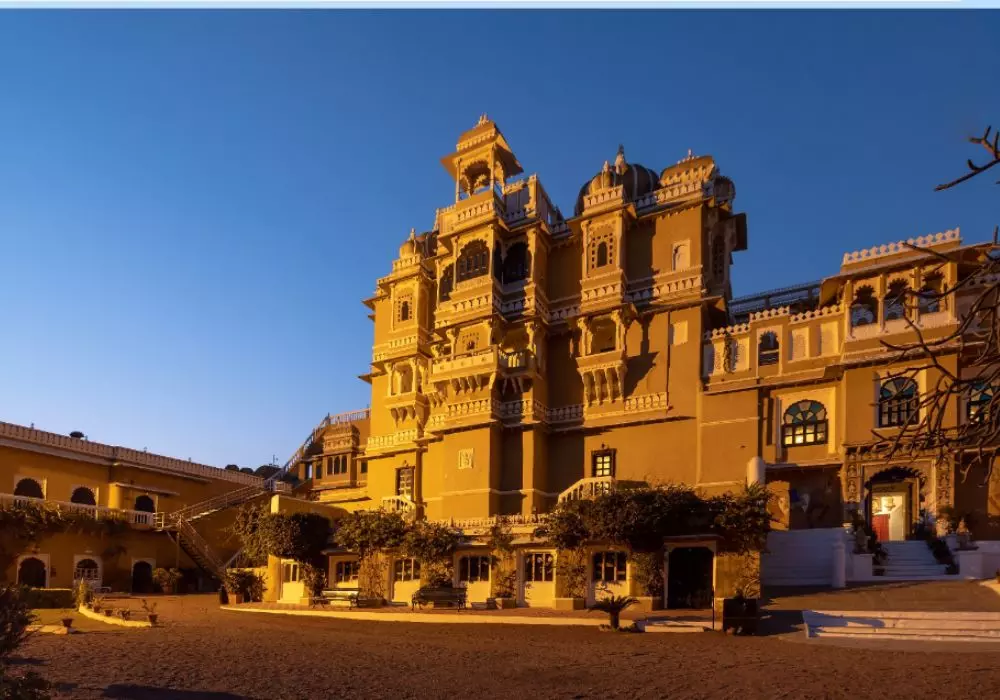

Deogarh Mahal, situated in the town of Deogarh, Rajasthan, is a splendid heritage palace dating back to the 17th century.
Built by Rawat Nahar Singh, it served as the residence of the Deogarh royal family.
This fortress-like structure features magnificent Rajput and Mughal architectural elements, including intricate carvings, jharokhas (balconies), and frescoes.
Converted into a luxurious heritage hotel, Deogarh Mahal offers guests an opportunity to experience Rajasthan’s royal heritage through opulent interiors, serene courtyards, and warm hospitality.
With its rich history and scenic surroundings, Deogarh Mahal provides a memorable retreat for travelers seeking an authentic royal experience in Rajasthan.
Jai Mahal Palace, Jaipur, Rajasthan
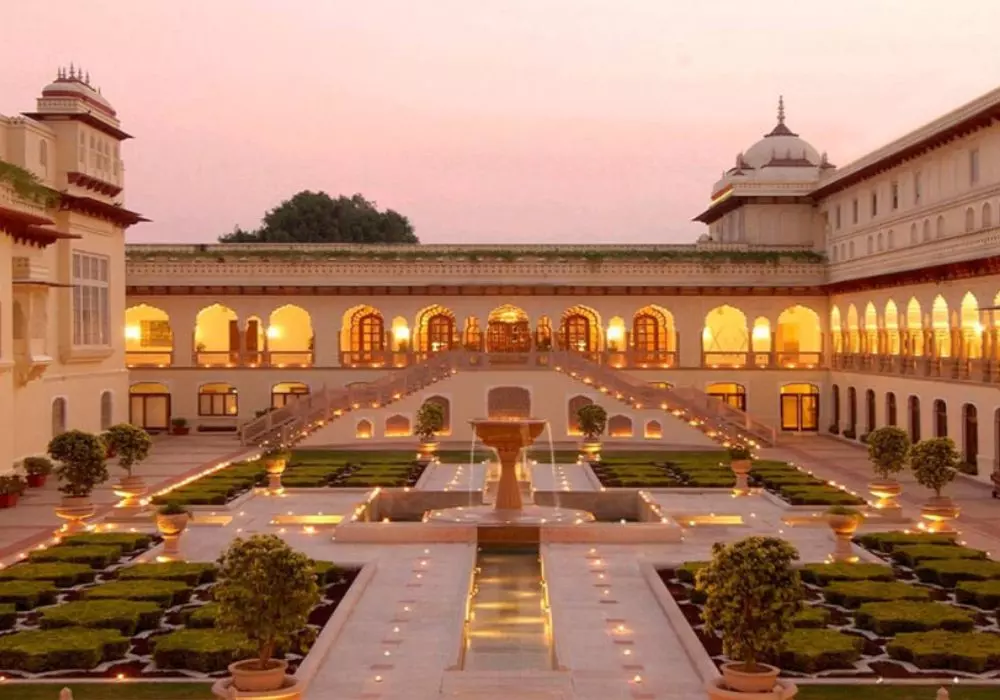

Jai Mahal Palace, situated in Jaipur, Rajasthan, is a luxurious heritage hotel that was once a royal residence built in the early 18th century by Maharaja Sawai Jai Singh II.
This majestic palace boasts stunning Indo-Saracenic architecture, featuring intricately carved arches, domes, and opulent interiors adorned with exquisite artwork and furnishings.
Surrounded by lush gardens, the palace offers guests a regal retreat with luxurious accommodations, fine dining options, and recreational facilities.
With its rich history and impeccable hospitality, Jai Mahal Palace provides a memorable experience for travelers seeking a royal stay in the vibrant city of Jaipur.
Shambhu Niwas Palace, Udaipur, Rajasthan
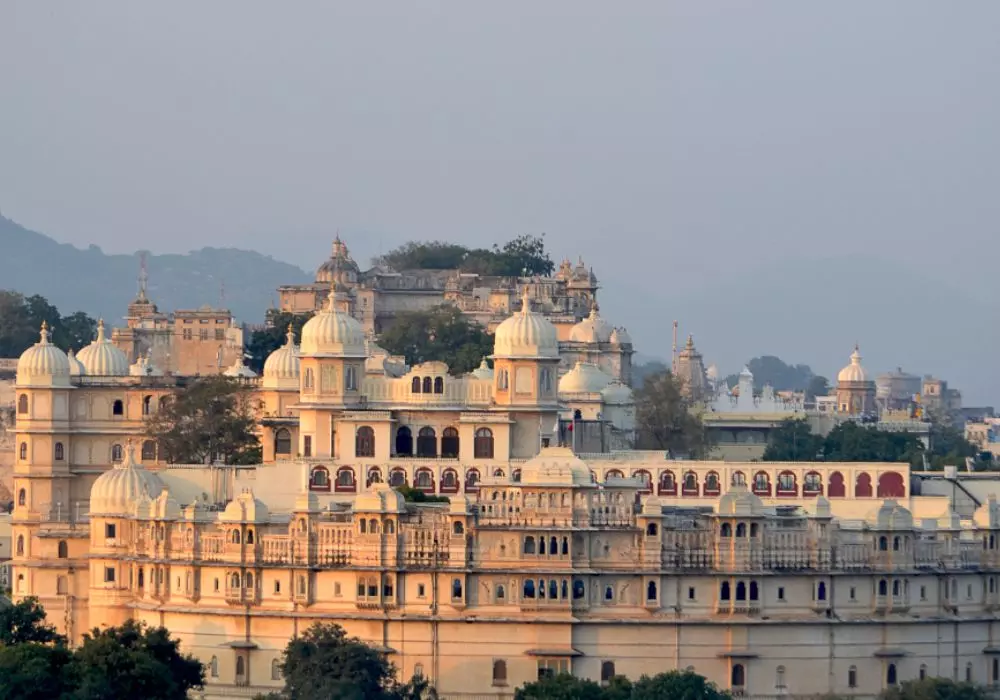

Shambhu Niwas Palace, located in Udaipur, Rajasthan, is a historic palace built in the early 20th century by Maharana Fateh Singh of Udaipur.
This elegant palace, set amidst serene surroundings, served as the Maharana’s residence and a guesthouse for visiting dignitaries.
The palace showcases a blend of Rajput and European architectural styles, featuring intricately carved balconies, ornate interiors, and picturesque gardens.
Today, Shambhu Niwas Palace has been converted into a luxury heritage hotel, offering guests a glimpse into Rajasthan’s royal heritage with its regal accommodations, fine dining options, and warm hospitality.
With its rich history and serene ambiance, Shambhu Niwas Palace provides an unforgettable experience for travelers exploring the city of Udaipur.
Samode Palace, Rajasthan
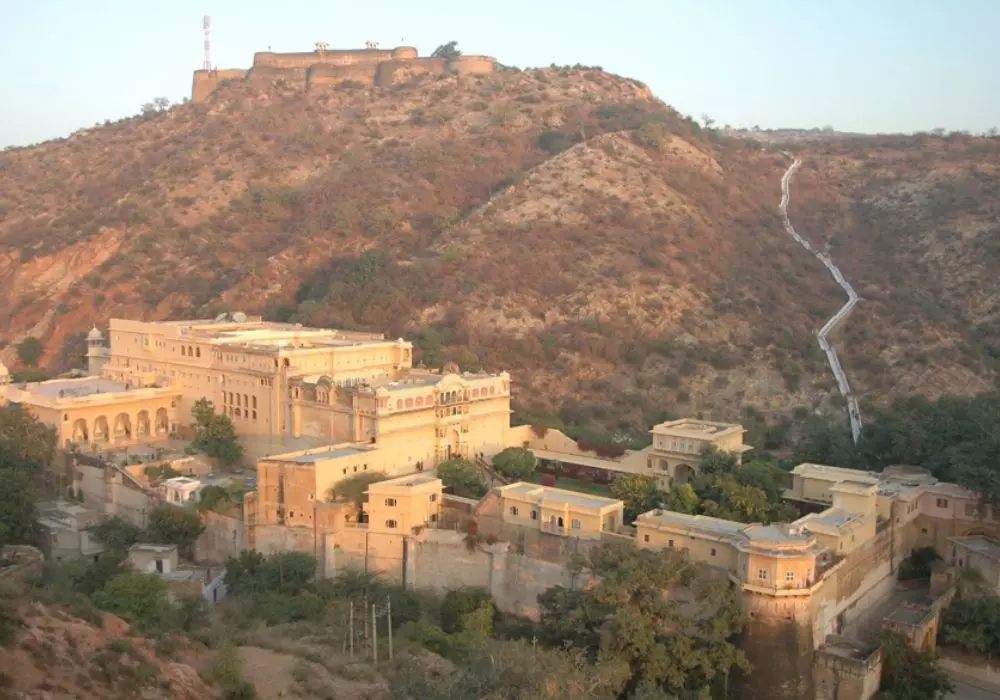

Samode Palace, nestled in the heart of Rajasthan, is a splendid testament to the region’s rich cultural heritage.
Constructed over four centuries ago by Rawal Berisal, this architectural masterpiece seamlessly blends Rajput and Mughal influences, boasting ornate arches, exquisite frescoes, and elegant courtyards.
With its regal accommodations, fine dining options, and impeccable hospitality, it provides a memorable retreat in the serene surroundings of Rajasthan.
Samode Palace is not just a hotel; it’s a journey back in time, offering a glimpse into the majestic lifestyle of India’s aristocracy.
Rani Mahal, Jhansi, Uttar Pradesh
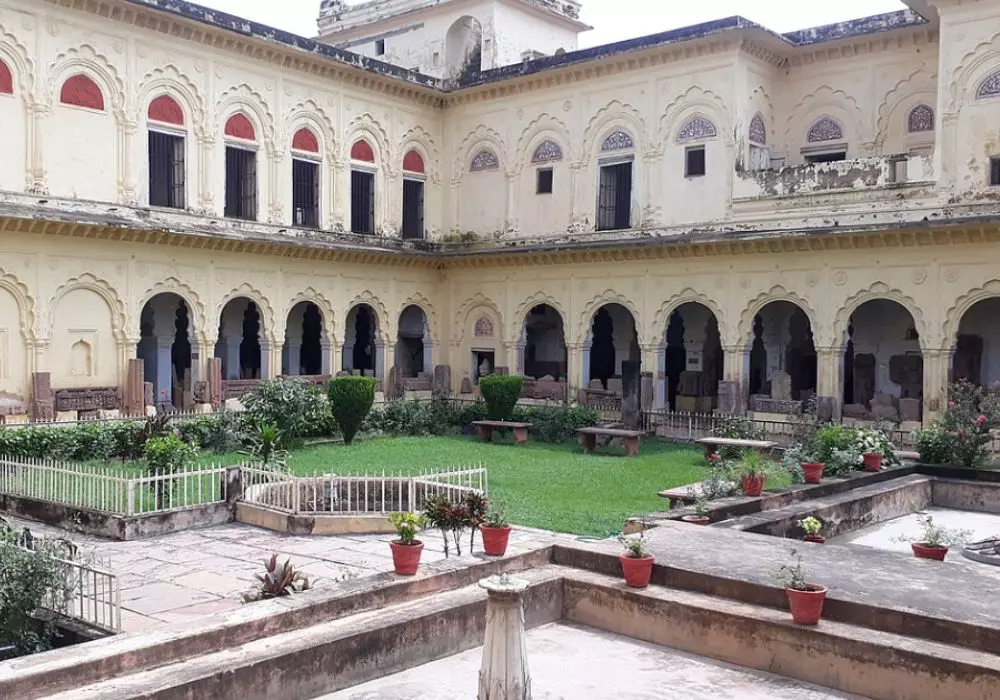

Rani Mahal, located in Jhansi, Uttar Pradesh, is a historic palace renowned for its architectural grandeur and cultural significance.
Built in the 18th century, the palace served as the residence of the queens of the Maratha rulers of Jhansi.
It features a distinctive blend of Rajput and Mughal architectural styles, characterized by ornate balconies, intricately carved pillars, and vibrant frescoes.
Rani Mahal stands as a symbol of resilience and valor, closely associated with the legendary Rani Lakshmibai of Jhansi, who played a pivotal role in the Indian Rebellion of 1857.
Its majestic halls and courtyards, along with the surrounding gardens, provide a serene retreat for travelers exploring the cultural treasures of Uttar Pradesh.
Hill Palace, Kochi, Kerala
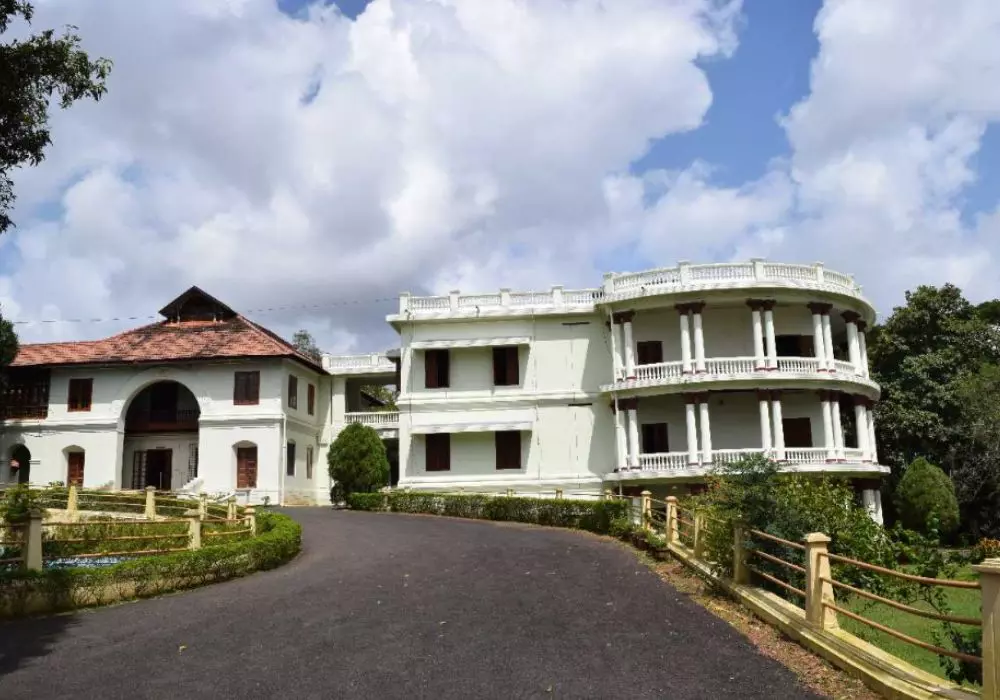

Hill Palace, located in Kochi, Kerala, is a majestic heritage complex that served as the official residence of the Kochi royal family.
Built in the 19th century, it is the largest archaeological museum in Kerala, showcasing a vast collection of artifacts, paintings, sculptures, and royal belongings.
The palace complex features stunning architecture with a blend of traditional Kerala, Dutch, and Portuguese styles, surrounded by lush greenery and scenic landscapes.
Hill Palace offers visitors an immersive experience into Kerala’s rich cultural heritage and royal legacy, making it a must-visit destination for history enthusiasts and tourists alike.
Thanjavur Maratha Palace, Tamil Nadu
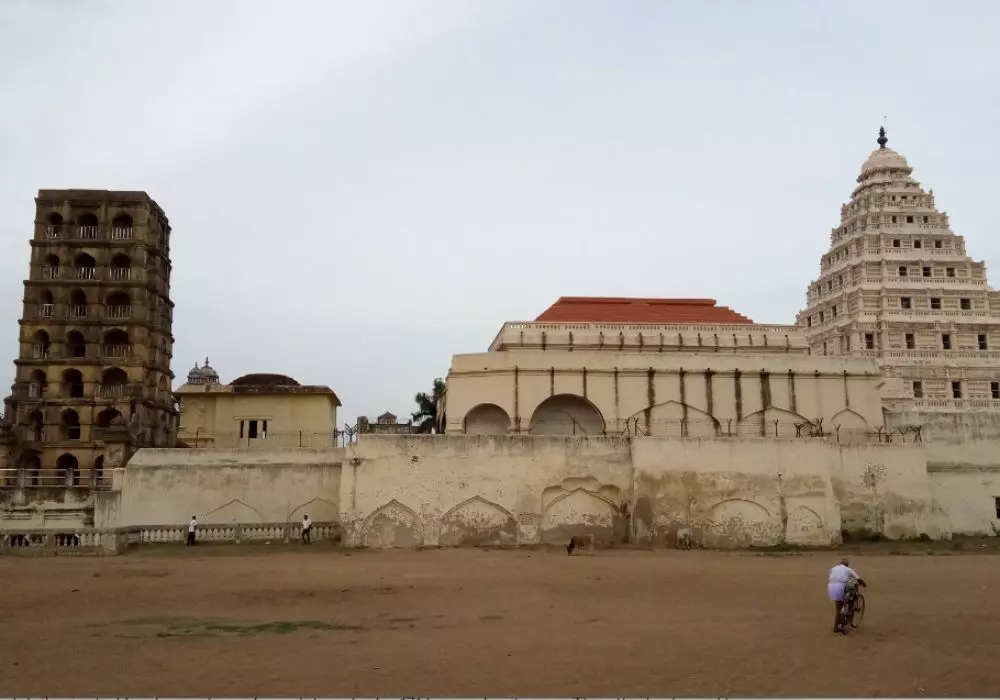

The Thanjavur Maratha Palace, located in Tamil Nadu, is a significant historical monument that reflects the architectural grandeur of the Maratha rulers.
Built in the 17th century by the Maratha dynasty, it served as the official residence of the Bhonsle family, who ruled over the region.
The palace complex comprises several structures, including the Durbar Hall, the Saraswathi Mahal Library, and various galleries showcasing artifacts, sculptures, and paintings.
With its intricate carvings, ornate architecture, and rich historical significance, the Thanjavur Maratha Palace stands as a testament to Tamil Nadu’s cultural heritage and attracts visitors from around the world.
Thirumalai Nayakkar Palace, Madurai, Tamil Nadu
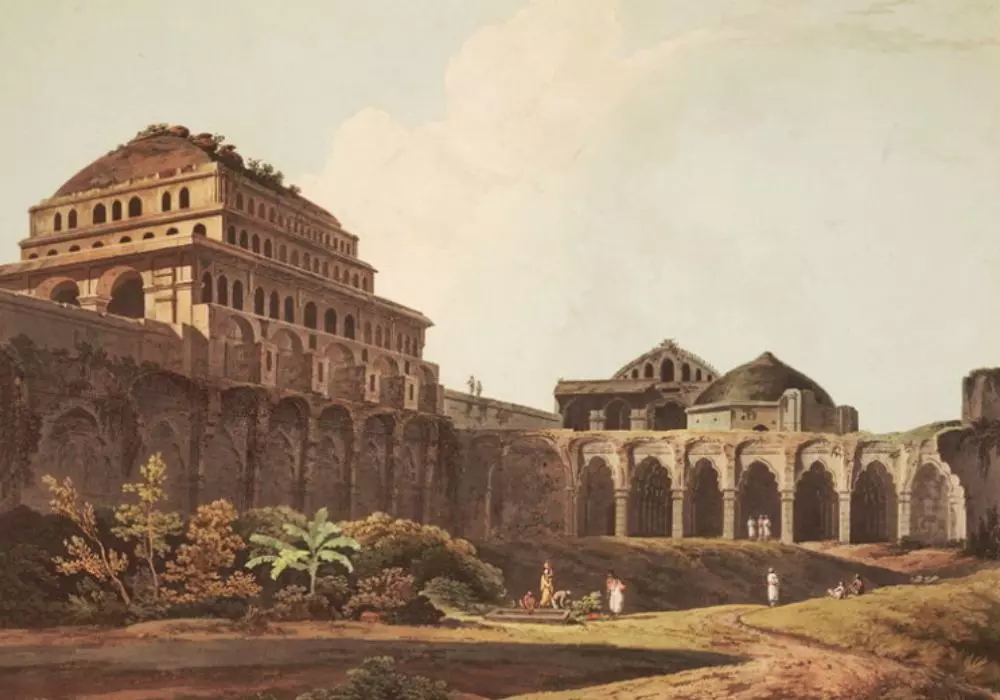

The Thirumalai Nayakkar Palace in Madurai, Tamil Nadu, is an architectural marvel dating back to the 17th century.
Built by King Thirumalai Nayak of the Nayak dynasty, it once served as the residence of the Madurai Nayak rulers.
The palace boasts a blend of Dravidian and Islamic architectural styles, featuring towering pillars, intricately carved arches, and spacious courtyards.
Although much of the palace is in ruins, visitors can still admire its grandeur through surviving structures like the Swarga Vilasam (Celestial Pavilion) and Durbar Hall.
Today, the palace stands as a testament to Tamil Nadu’s rich cultural heritage, attracting tourists with its historical significance and architectural beauty.
Rajwada, Indore, Madhya Pradesh
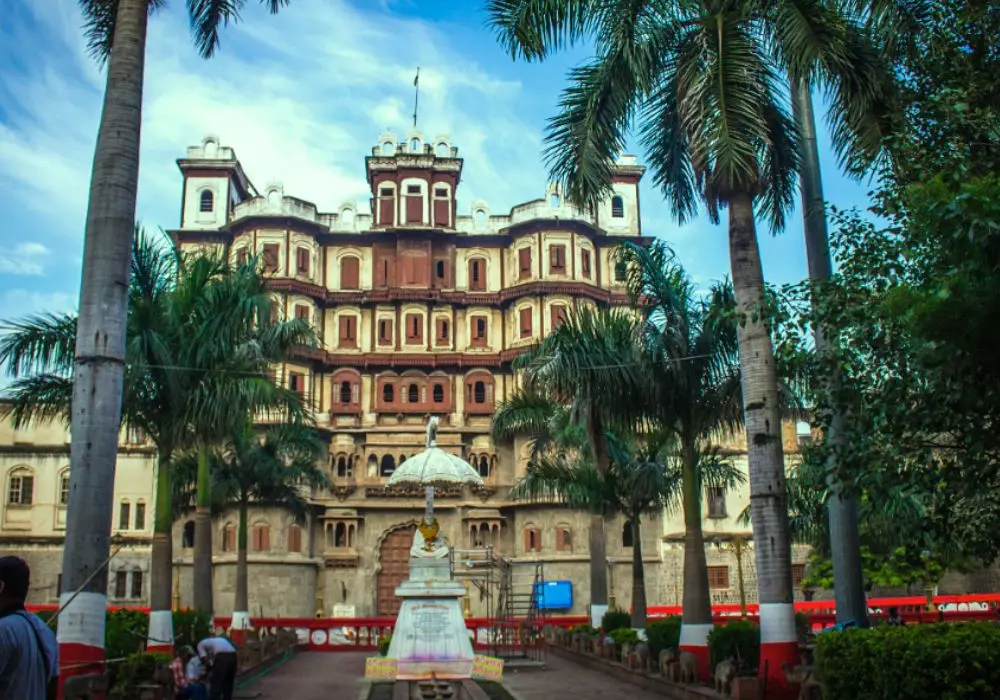

Rajwada, located in Indore, Madhya Pradesh, is a historic palace that stands as a symbol of the city’s rich cultural heritage.
Built during the Holkar dynasty in the 18th century, it served as the royal residence and administrative center of the rulers of Indore.
The palace showcases a unique blend of Maratha, Mughal, and French architectural styles, featuring intricately carved wooden pillars, graceful arches, and ornate balconies.
Despite facing destruction in various fires and natural calamities, Rajwada has been partially restored and preserved as a heritage site.
Visitors can explore its grand halls, courtyards, and museum galleries housing artifacts and memorabilia from the Holkar era.
Rajwada remains a prominent landmark in Indore and a cherished symbol of the city’s royal legacy.
Sheesh Mahal, Patiala, Punjab
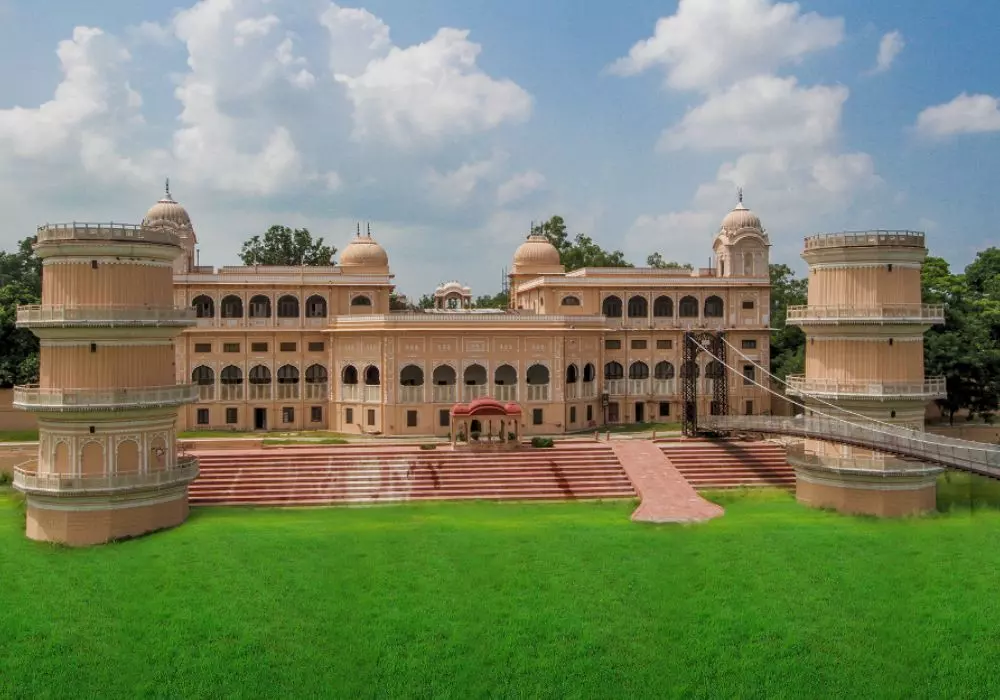

The Sheesh Mahal in Patiala, Punjab, is a magnificent palace renowned for its intricate mirror work and stunning craftsmanship.
Built in the 19th century by Maharaja Narinder Singh, it served as a royal residence and a venue for grand ceremonies.
The palace’s name, “Sheesh Mahal,” translates to “Palace of Mirrors,” reflecting its most striking feature: intricate mirror work covering the walls and ceilings.
Its Indo-Islamic architecture, ornate arches, and delicate filigree work add to its grandeur.
Today, the Sheesh Mahal stands as a proud symbol of Patiala’s cultural heritage, welcoming visitors to marvel at its beauty and historical significance.
Bangla Sahib Palace, Delhi
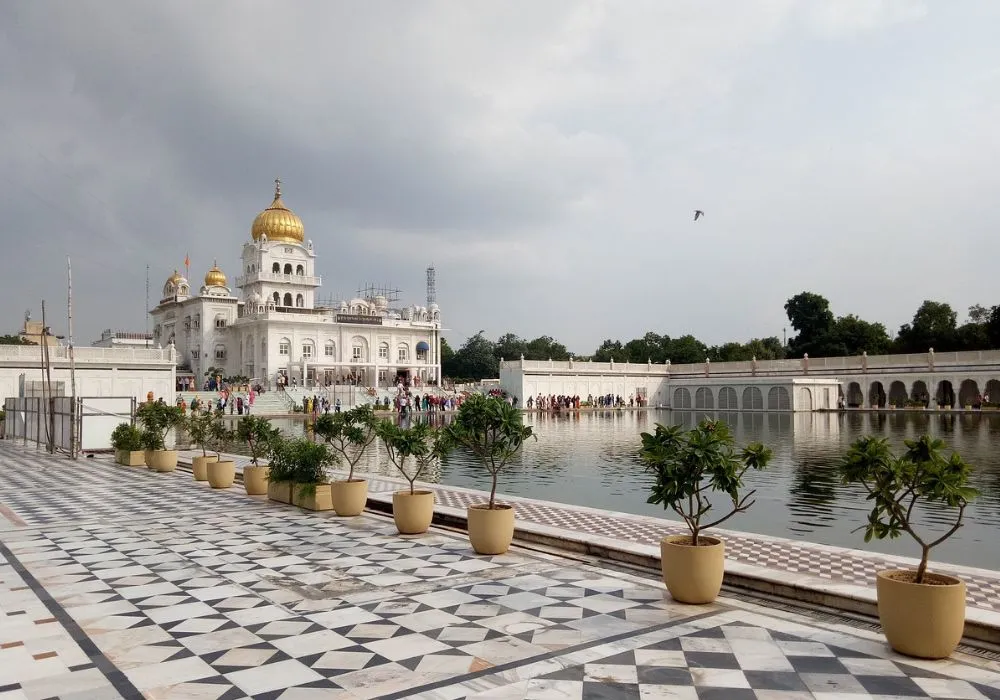

There seems to be some confusion as there isn’t a prominent historical palace known as “Bangla Sahib Palace” in Delhi.
However, there is a famous Sikh Gurudwara called Gurudwara Bangla Sahib in Delhi.
It’s one of the most prominent Sikh gurdwaras, known for its stunning architecture and its sacred sarovar (pool of water).
The gurdwara is associated with the eighth Sikh Guru, Guru Har Krishan Sahib Ji.
It serves as a place of worship, reflection, and community service for Sikhs and visitors alike.
If you’re referring to another place, please provide more details, and I’d be happy to help further.
Jai Mahal, Bharatpur, Rajasthan
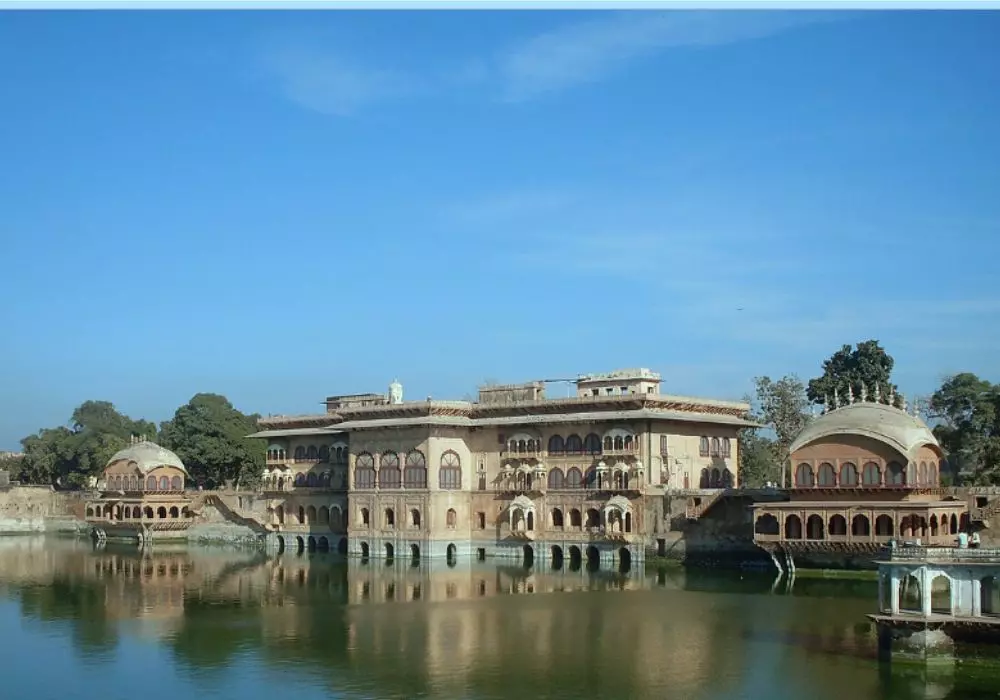

There isn’t a prominent palace known as “Jai Mahal” in Bharatpur, Rajasthan.
However, there is a notable heritage hotel called “Jai Mahal Palace” located in Jaipur, Rajasthan.
It is a luxurious heritage property that was once a royal residence built in the early 18th century by Maharaja Sawai Jai Singh II.
The palace boasts stunning Indo-Saracenic architecture and offers guests a regal experience with its opulent accommodations, fine dining options, and warm hospitality.
If you’re referring to another place, please provide more details, and I’ll be happy to assist further.
Rashtrapati Bhavan, Delhi
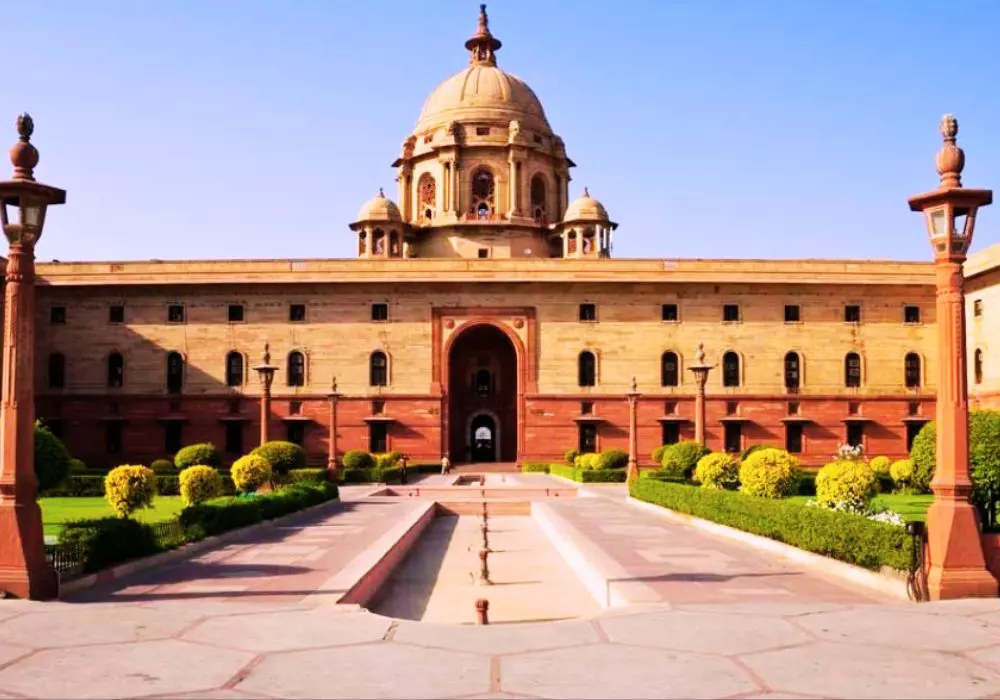

Rashtrapati Bhavan, located in New Delhi, is the official residence of the President of India.
Built in the early 20th century, it is a grand architectural marvel designed by British architect Edwin Lutyens.
Spread over 320 acres, the building combines Indian and Western architectural styles, boasting intricate carvings, majestic domes, and sprawling gardens.
With over 300 rooms, it serves as the President’s residence, as well as a venue for state functions and ceremonies.
Rashtrapati Bhavan stands as a symbol of India’s democracy and rich heritage, attracting visitors from around the world with its grandeur and historical significance.
Padmanabhapuram Palace, Kanyakumari, Tamil Nadu
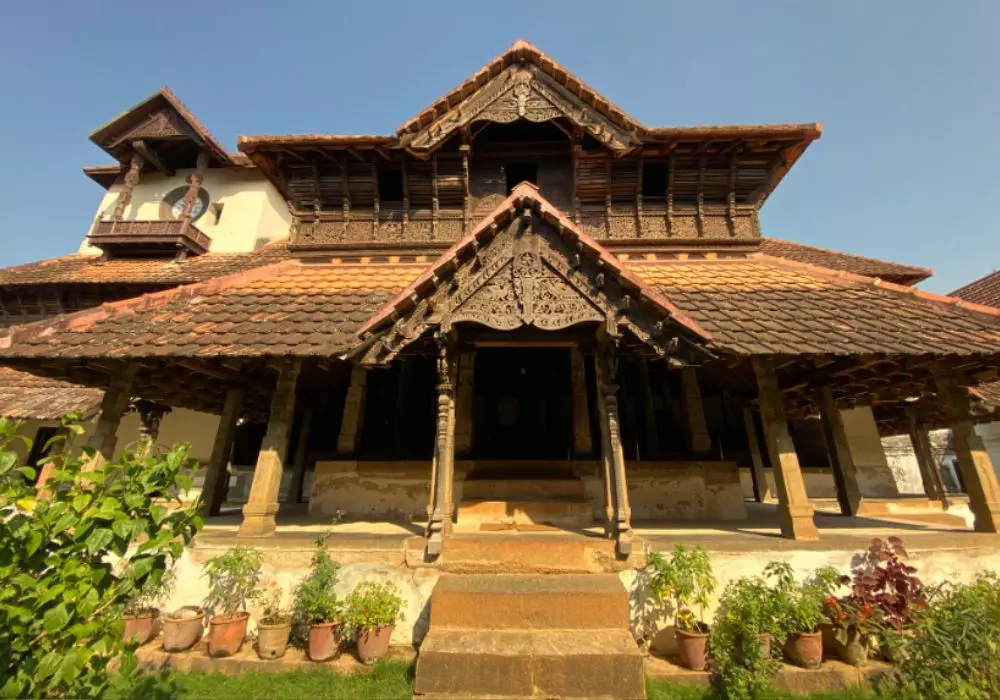

Padmanabhapuram Palace, situated in Kanyakumari district of Tamil Nadu, is a magnificent wooden palace that was once the seat of the Travancore rulers.
Constructed in the 16th century, it showcases traditional Kerala architecture with intricate woodwork, mural paintings, and antique furnishings.
The palace complex comprises several buildings, courtyards, and gardens, including the King’s Council Chamber, the Mother’s Palace, and the royal kitchen.
Padmanabhapuram Palace stands as a fine example of Kerala’s architectural heritage and serves as a popular tourist attraction, offering visitors a glimpse into the opulent lifestyle of the erstwhile Travancore royalty.
Conclusion
The palaces in India stand as magnificent testaments to the country’s royal heritage and architectural brilliance.
Visiting these palaces in India offers a unique opportunity to witness the grandeur and opulence that once defined the lives of the maharajas and their courts.
From the intricate carvings and lavish interiors to the rich history and cultural significance, each palace provides a captivating glimpse into India’s regal past.
Exploring these palaces in India not only enriches one’s understanding of history but also leaves an indelible impression of the splendor and grandeur that still echoes through their halls.
